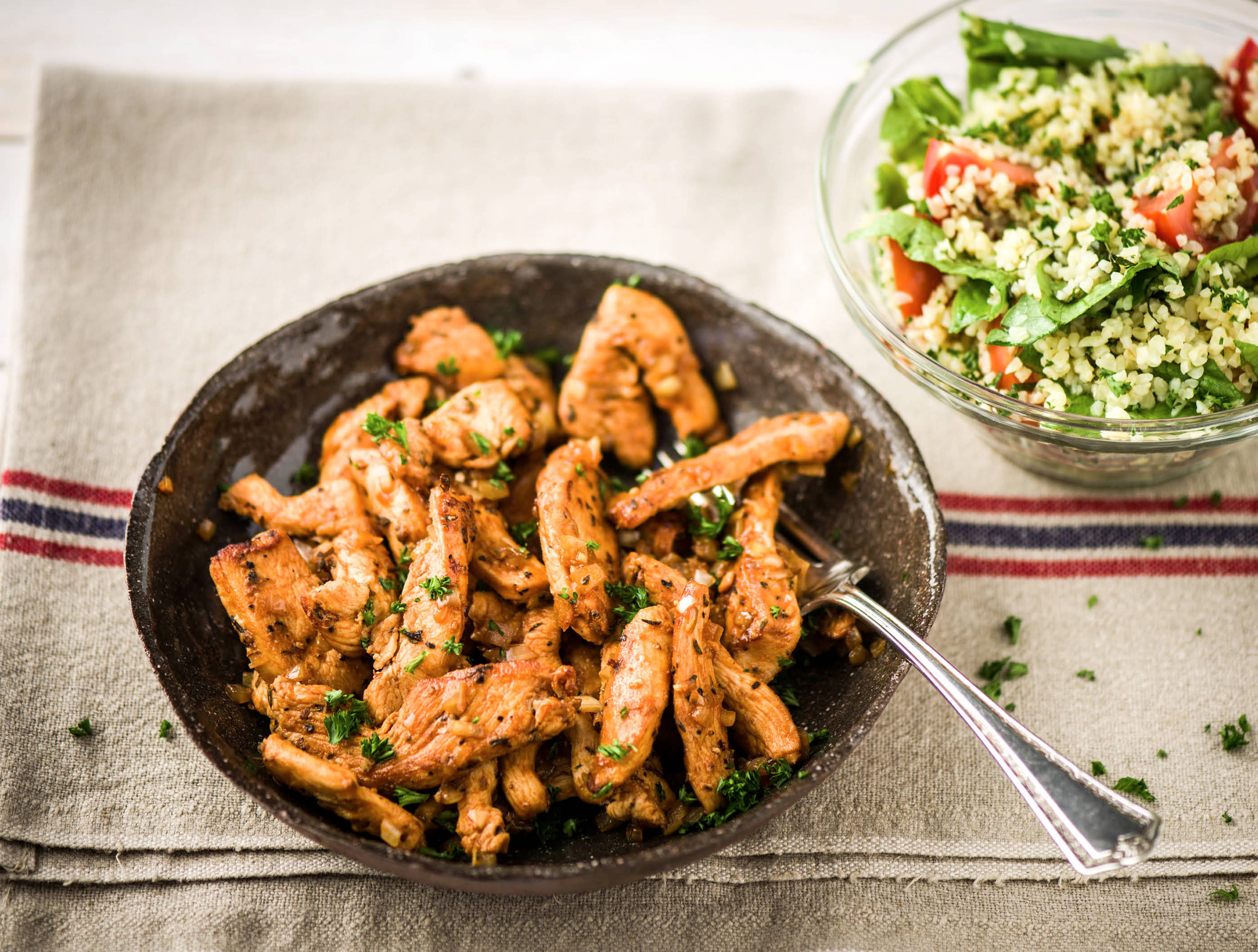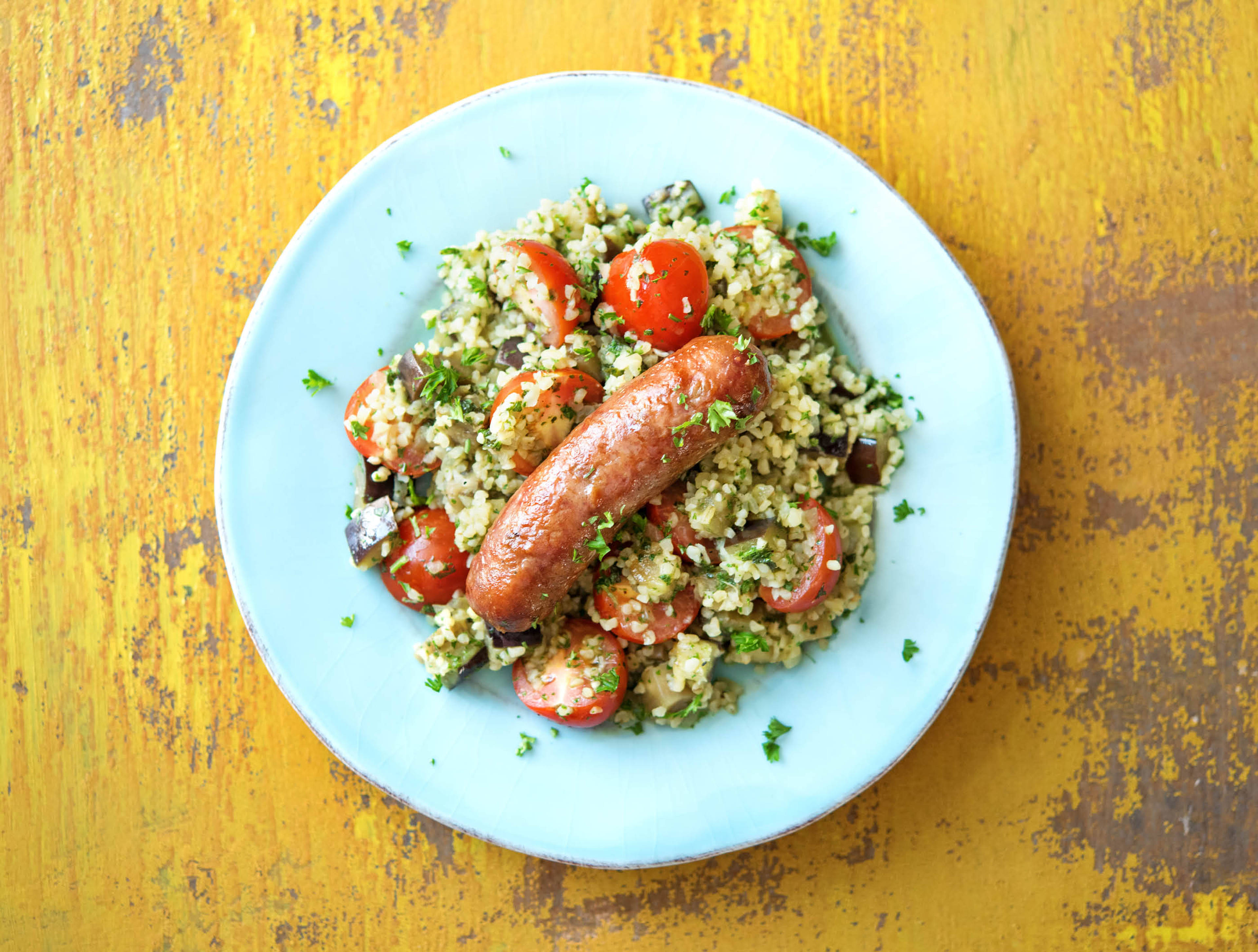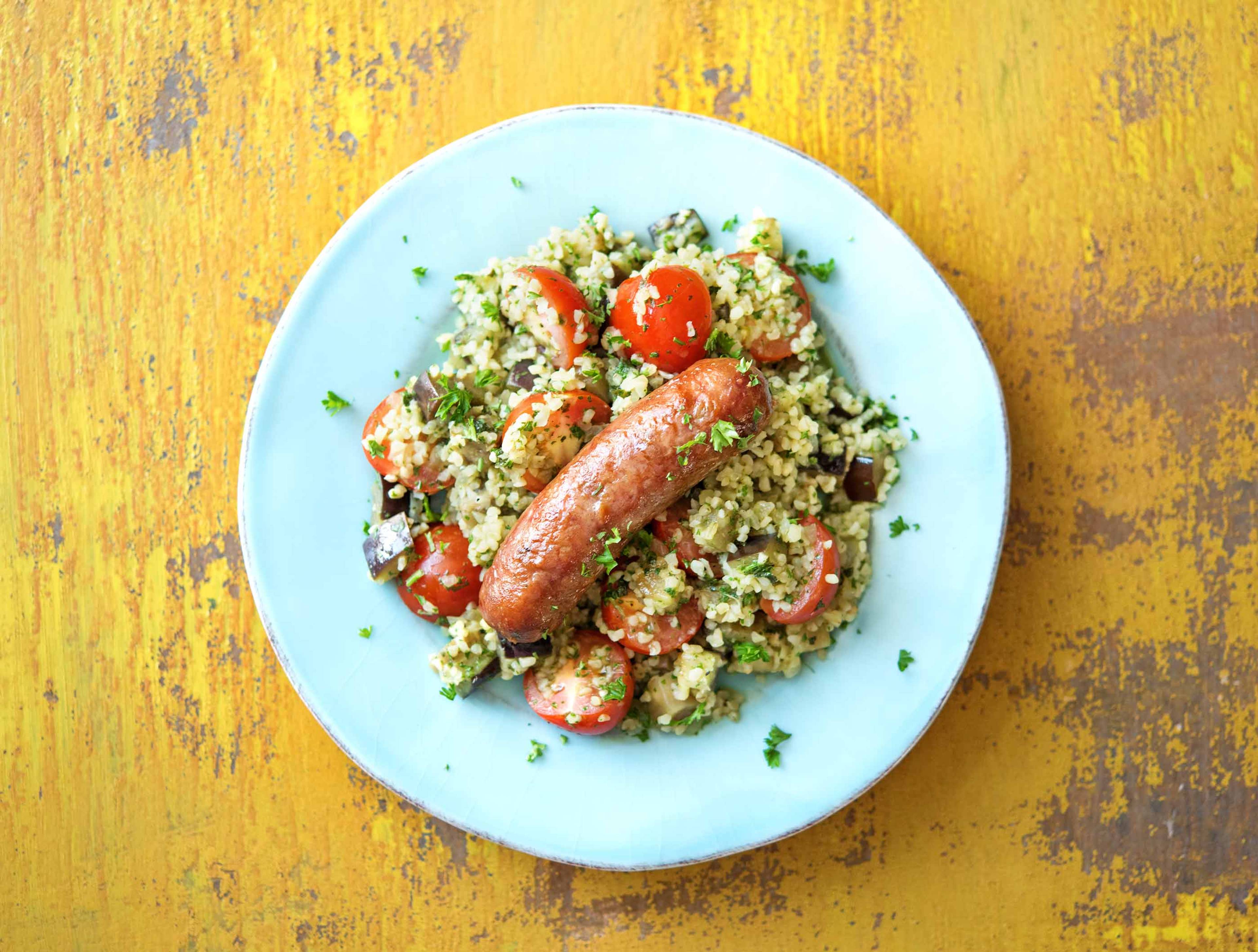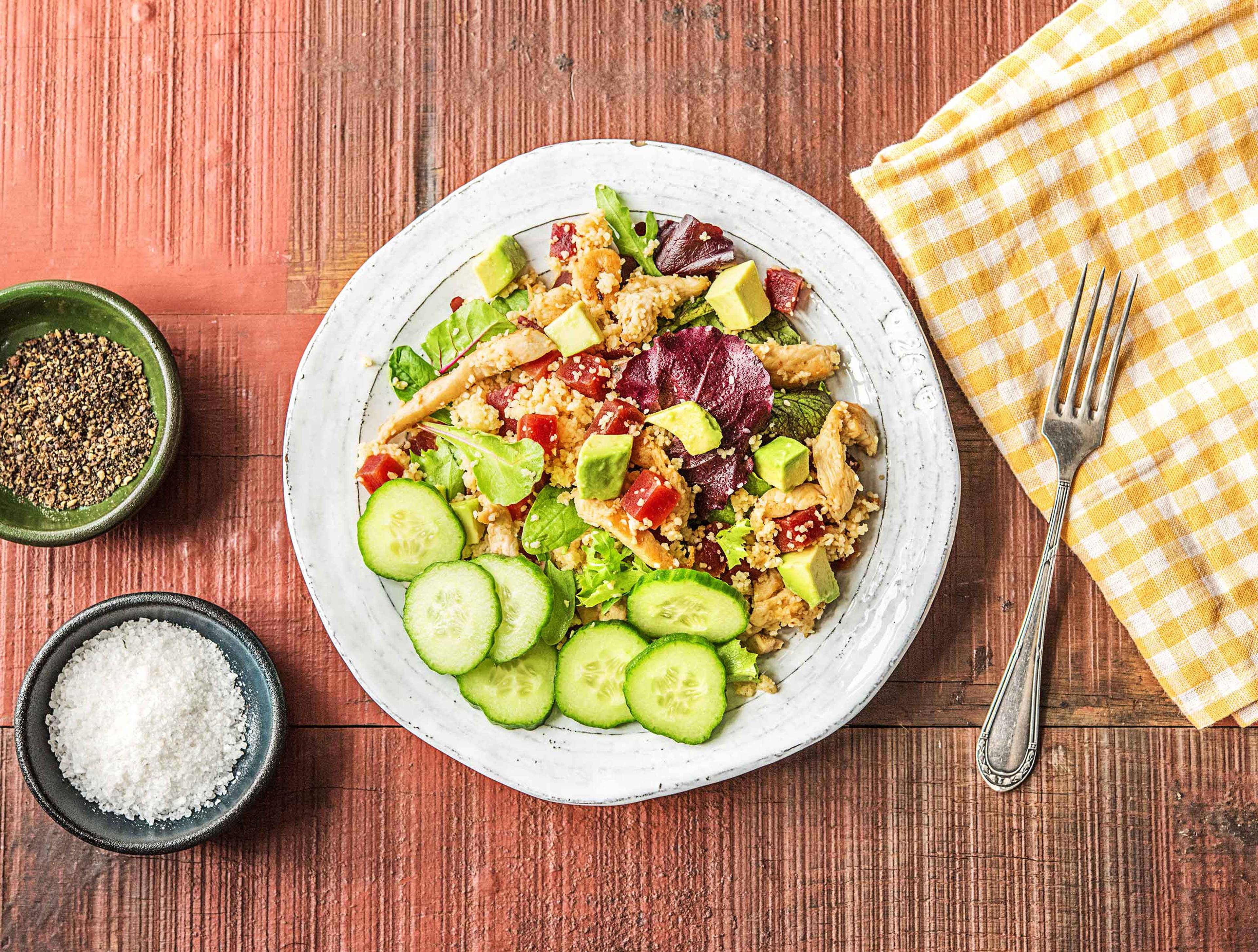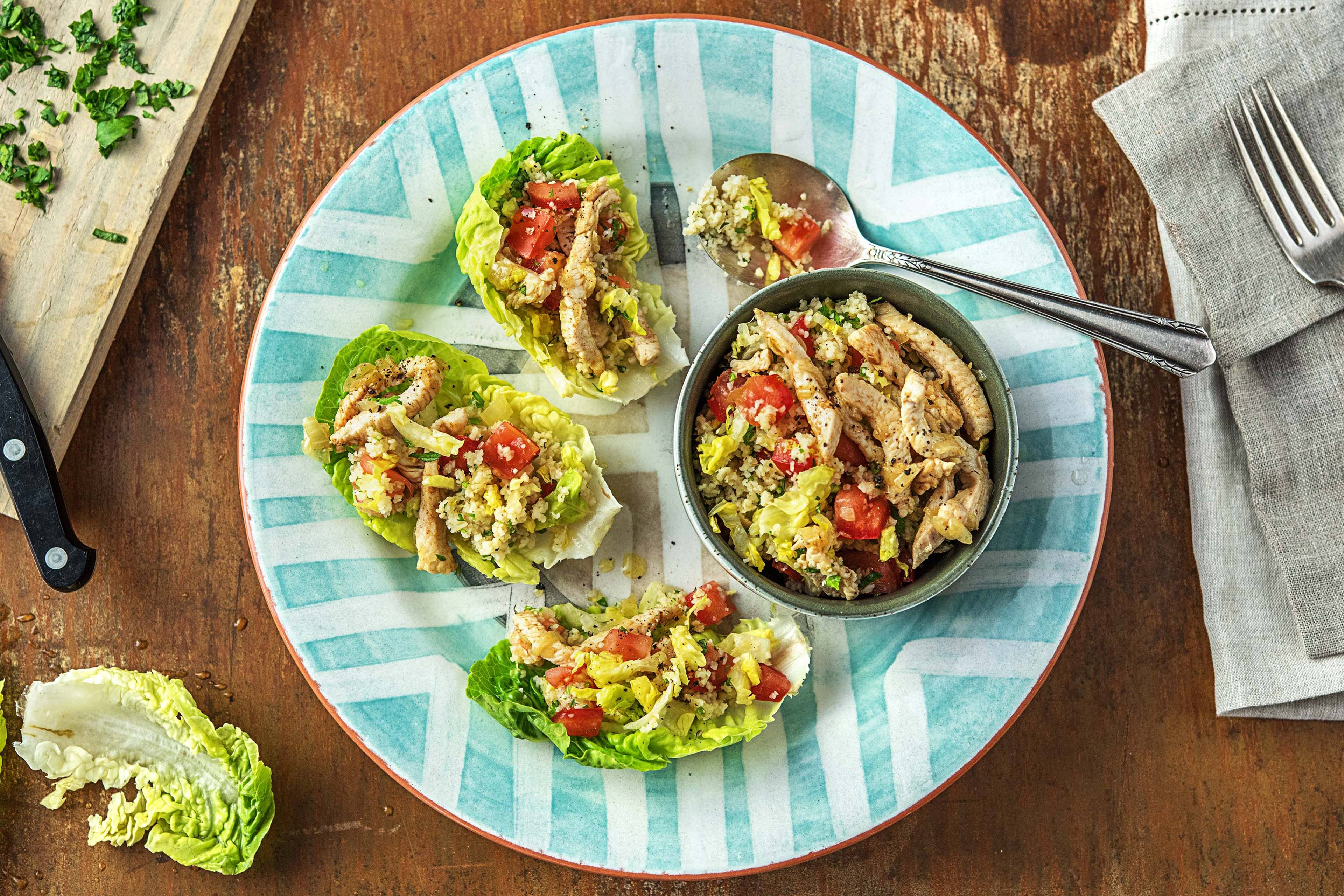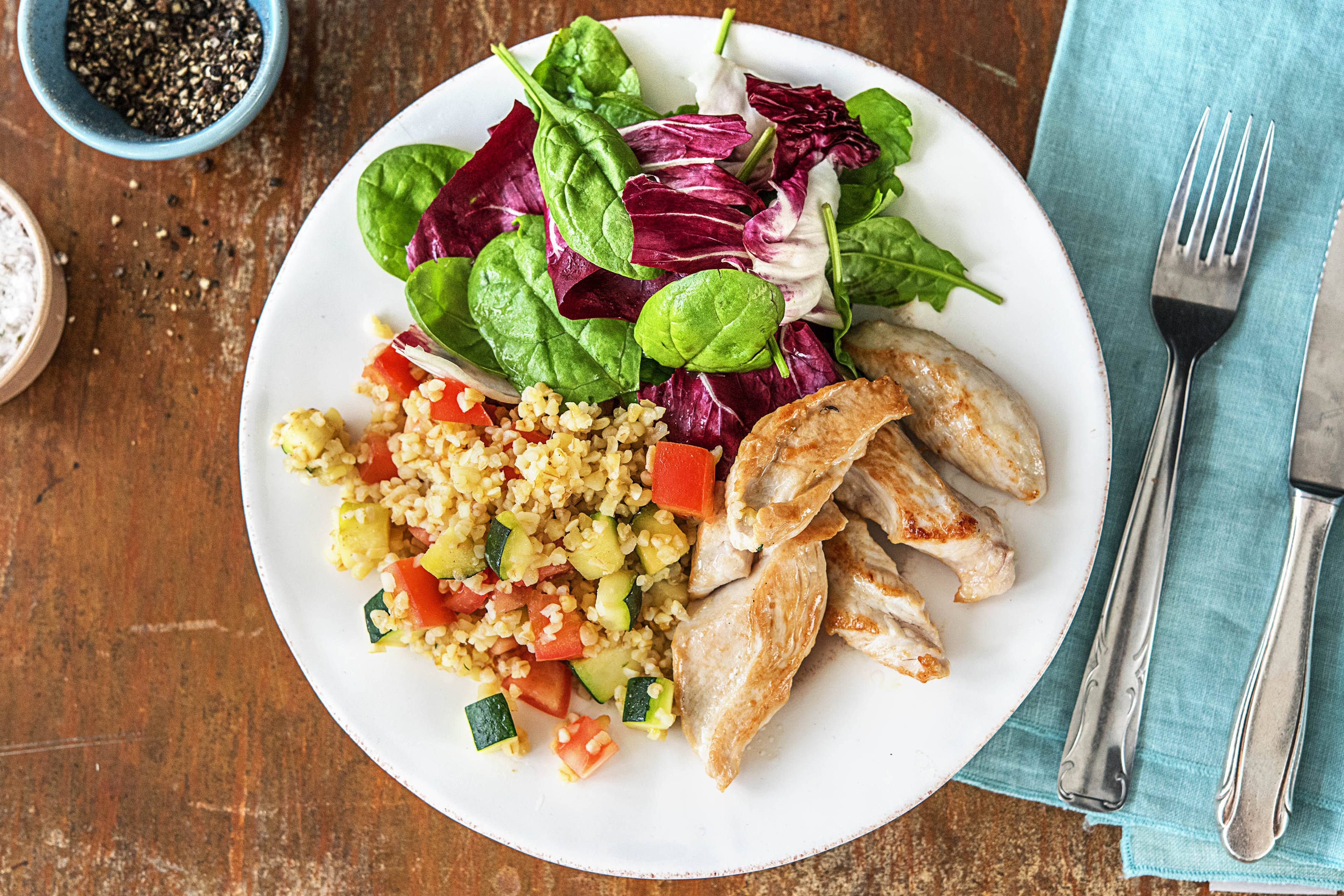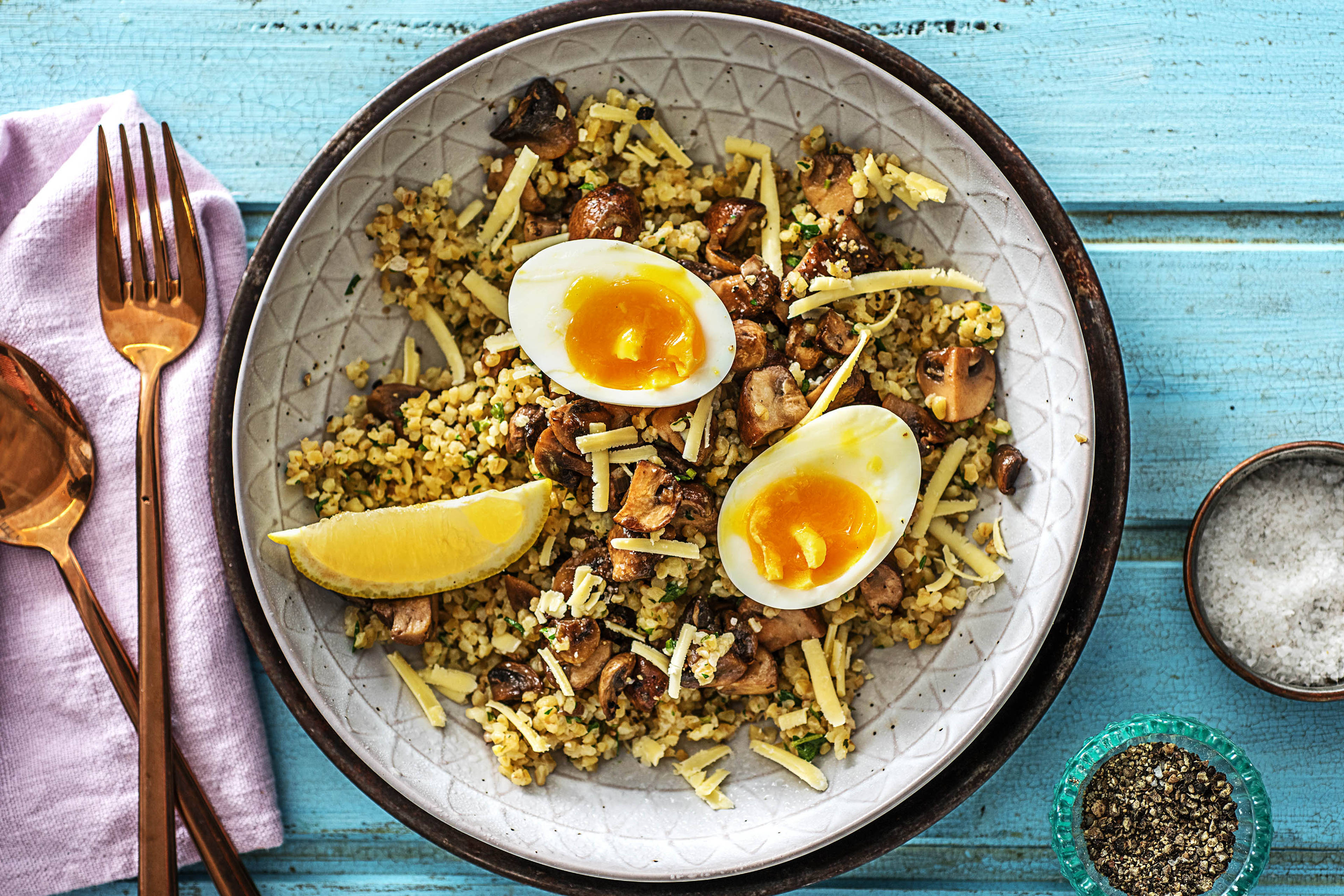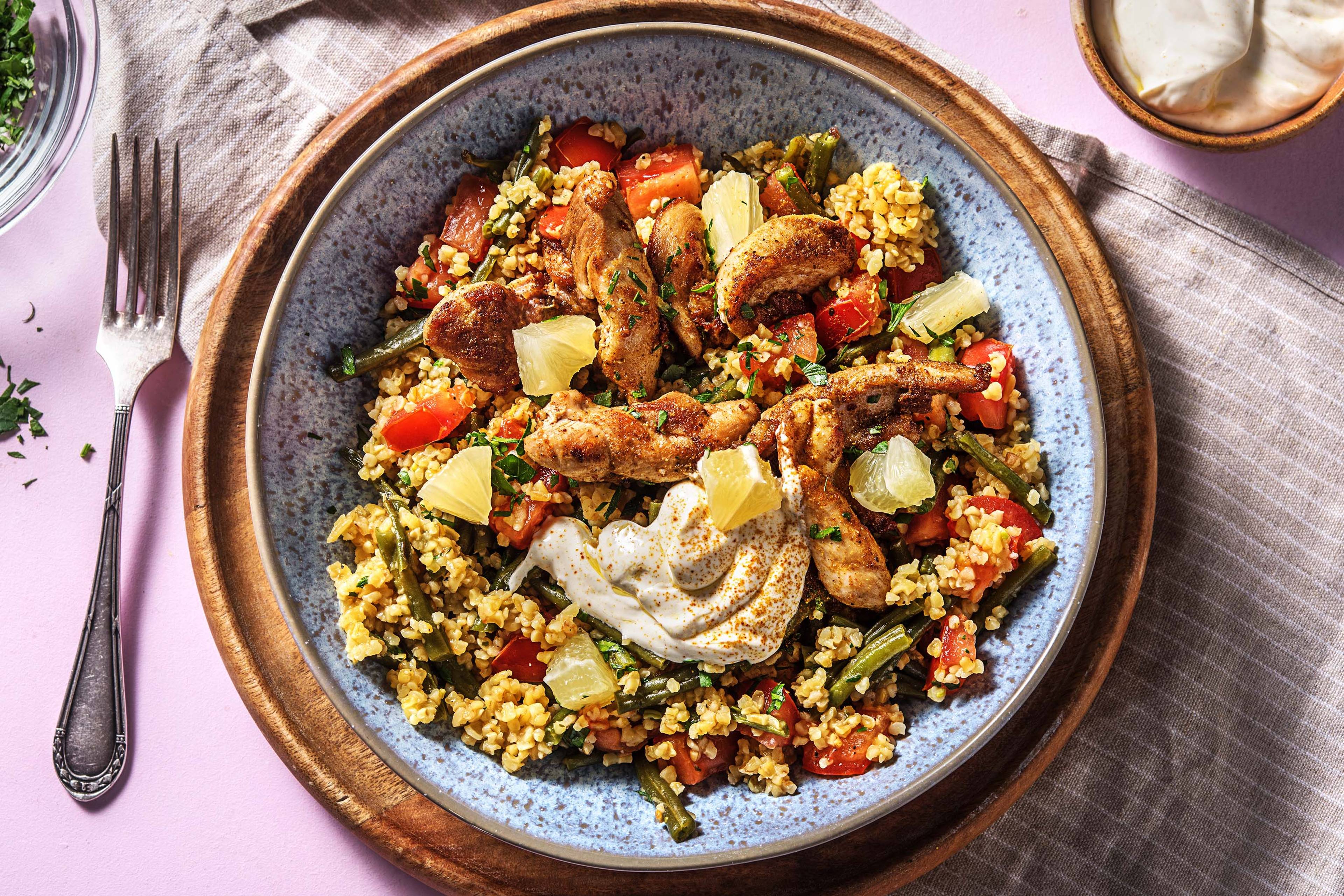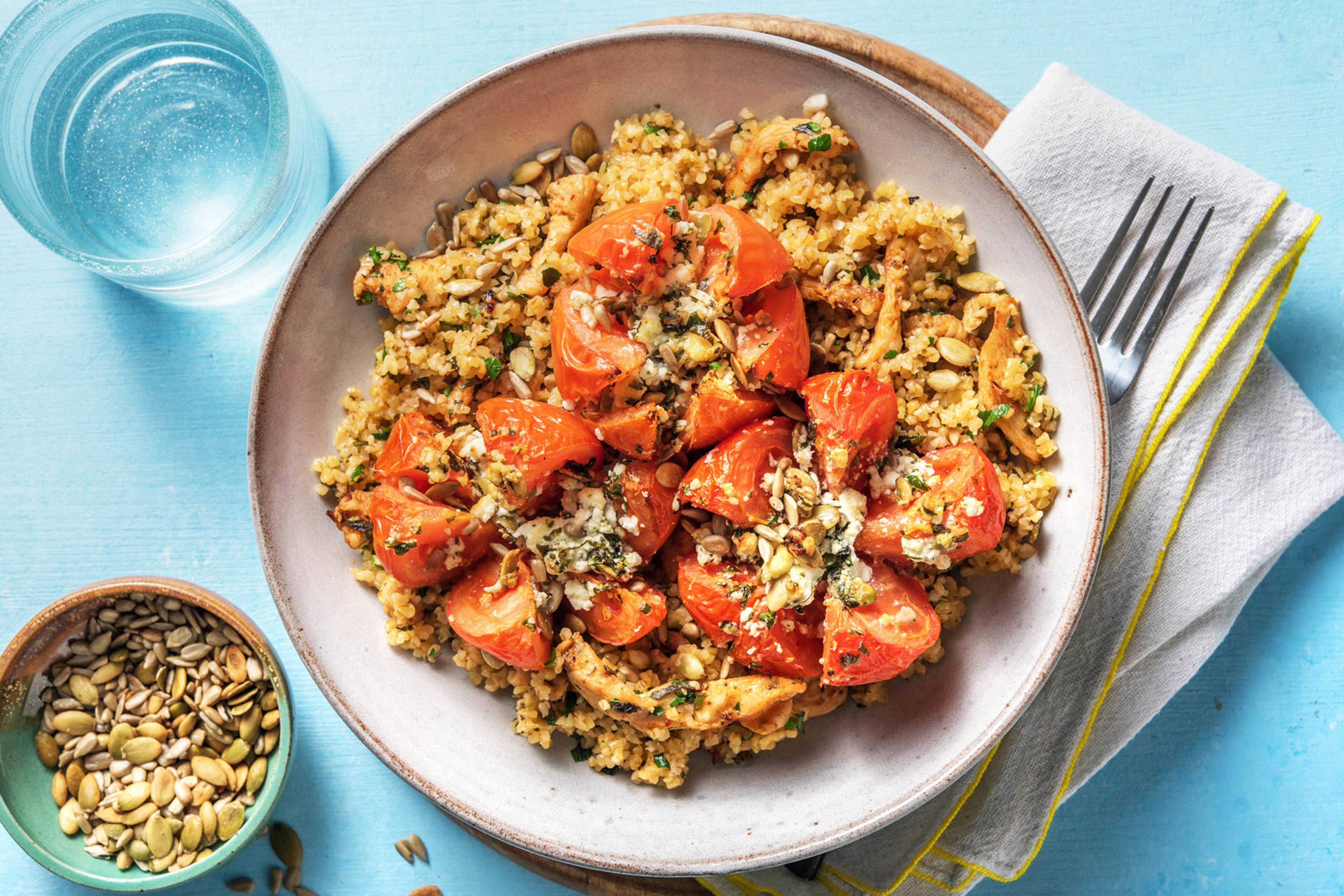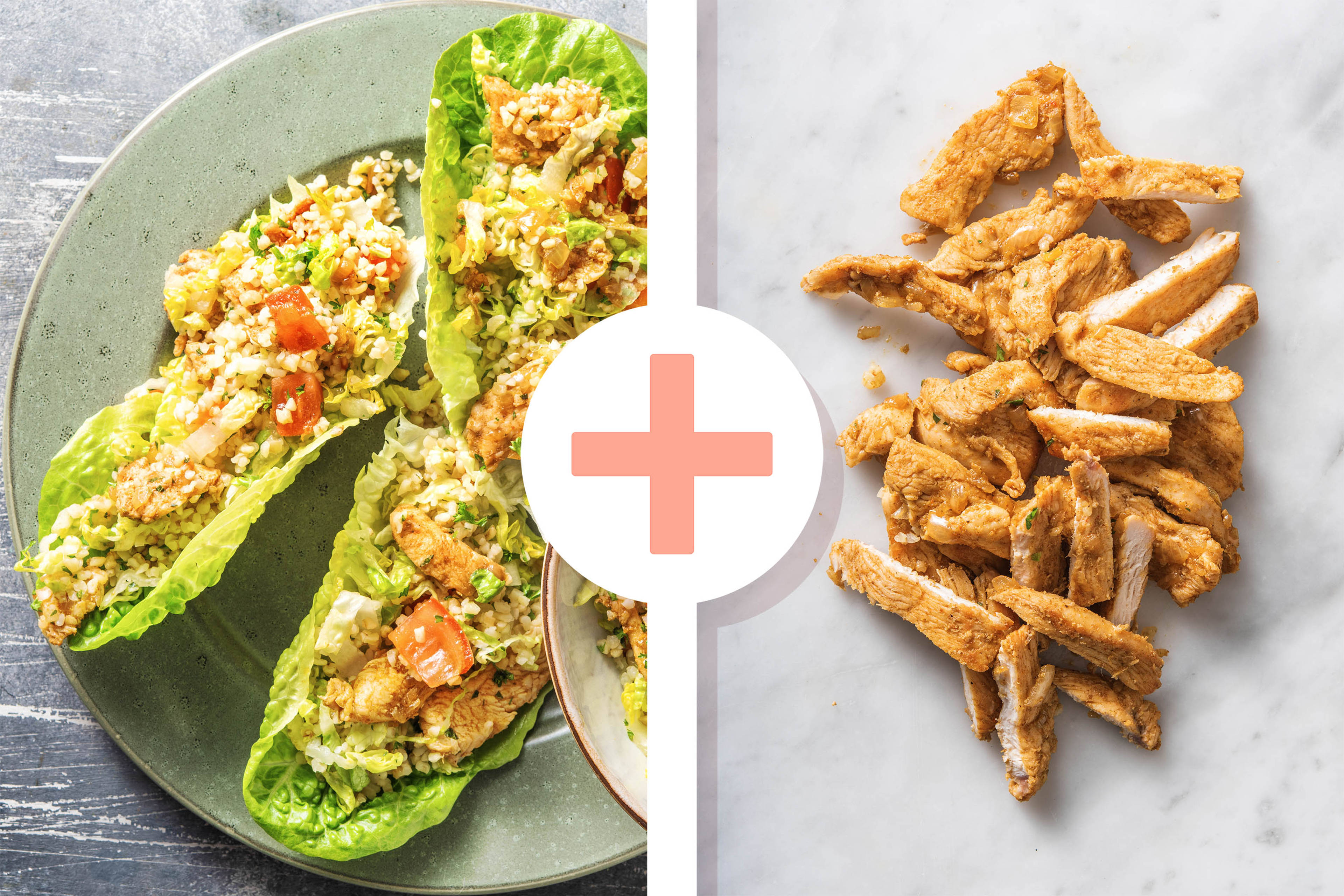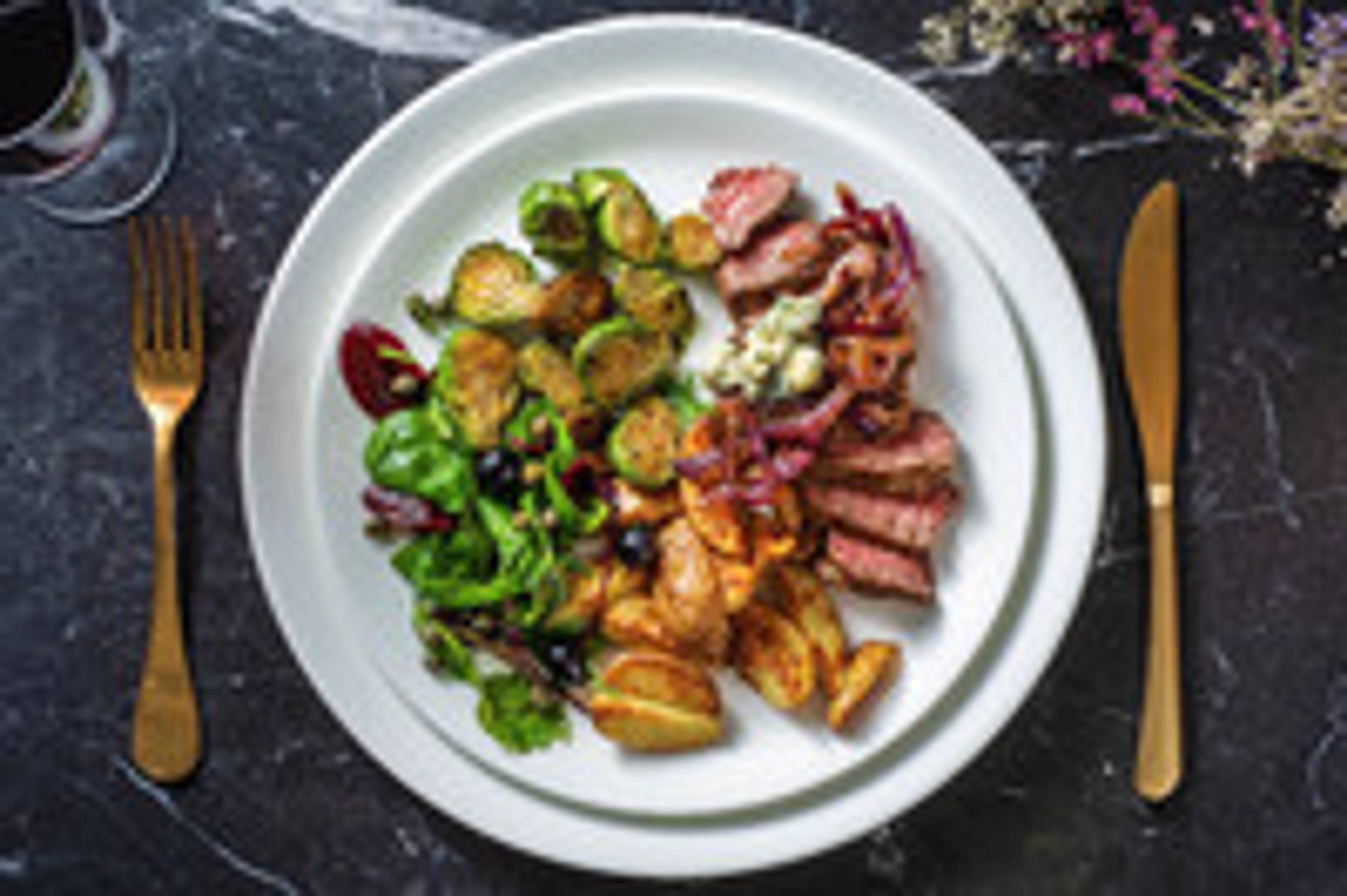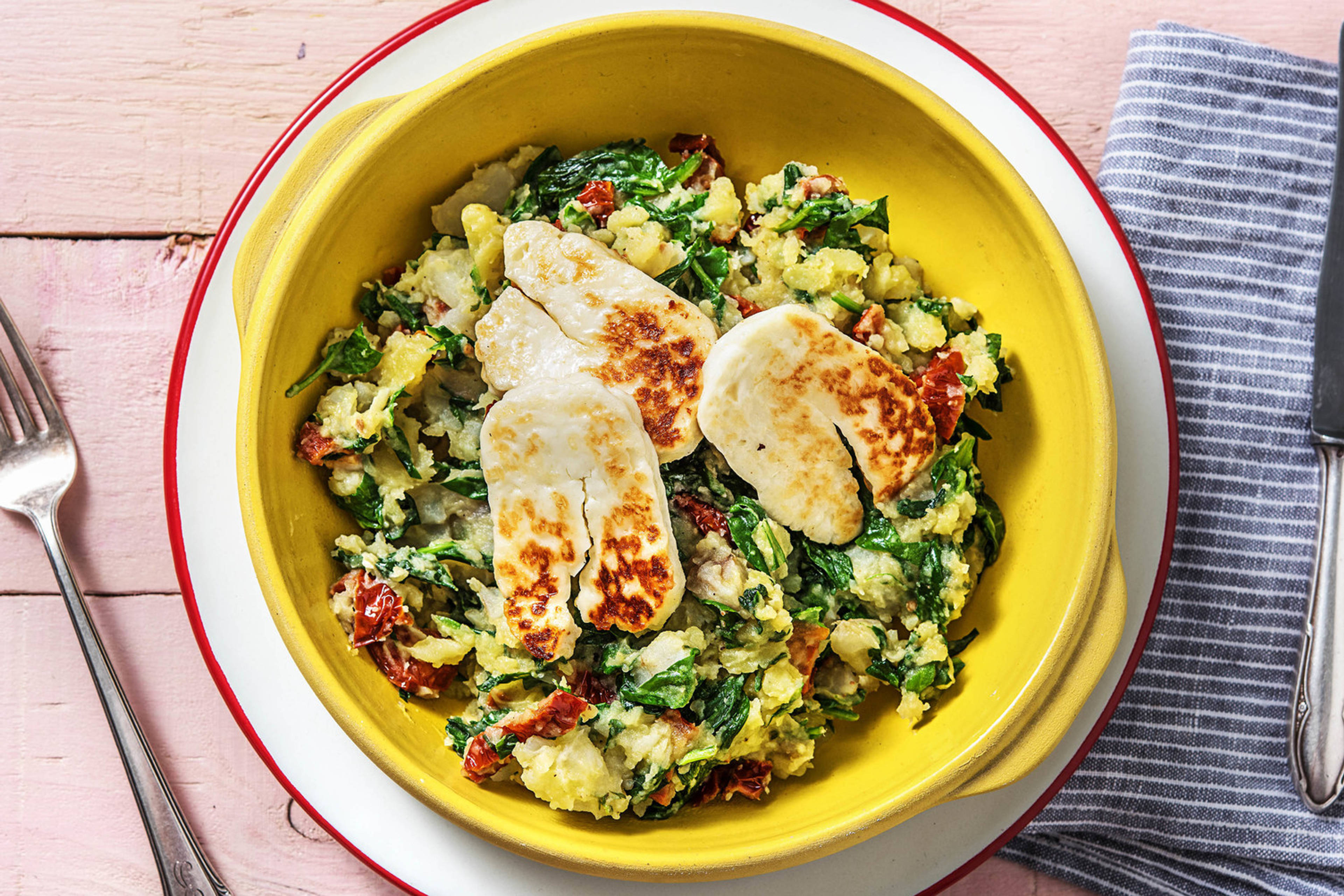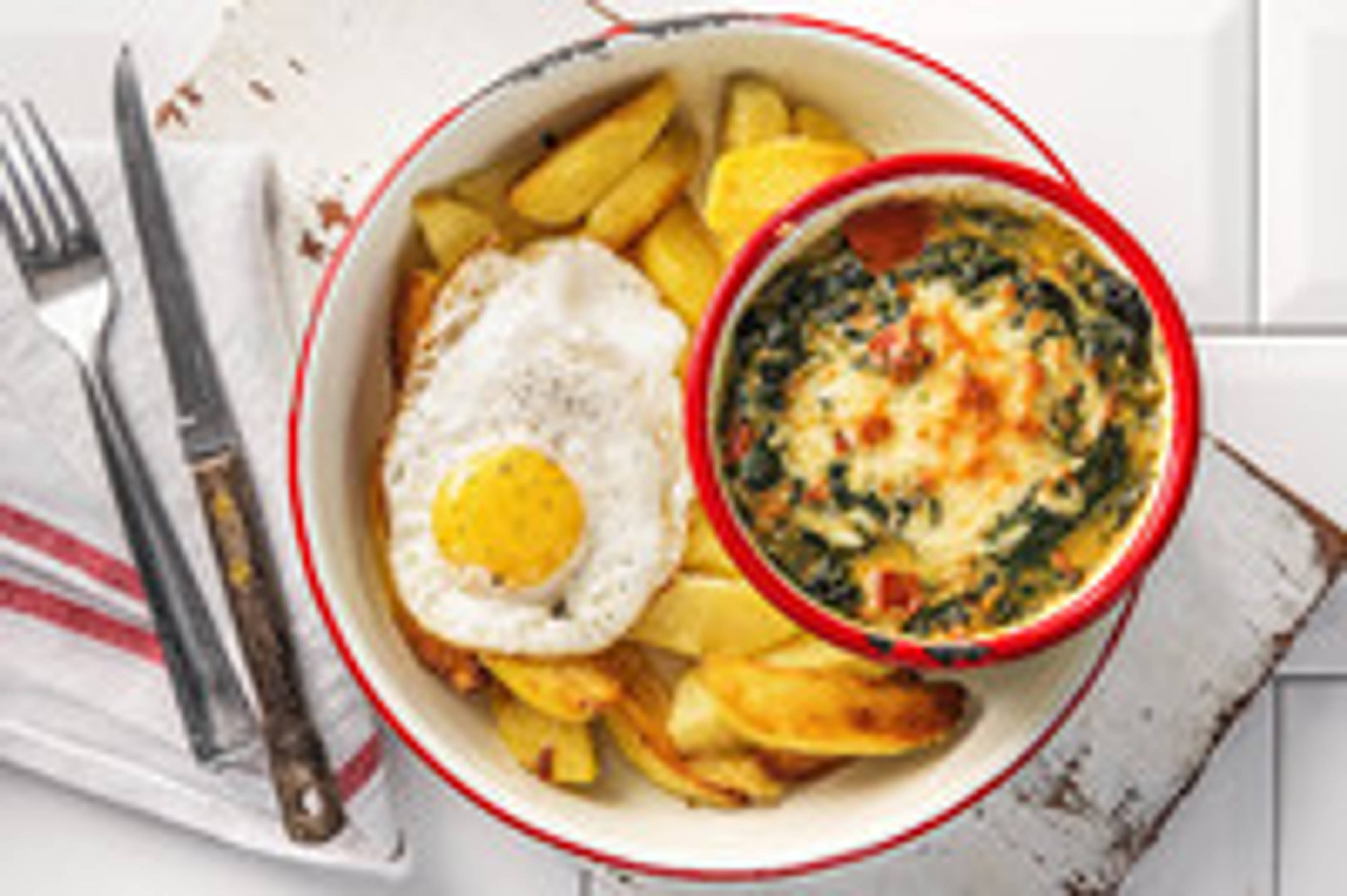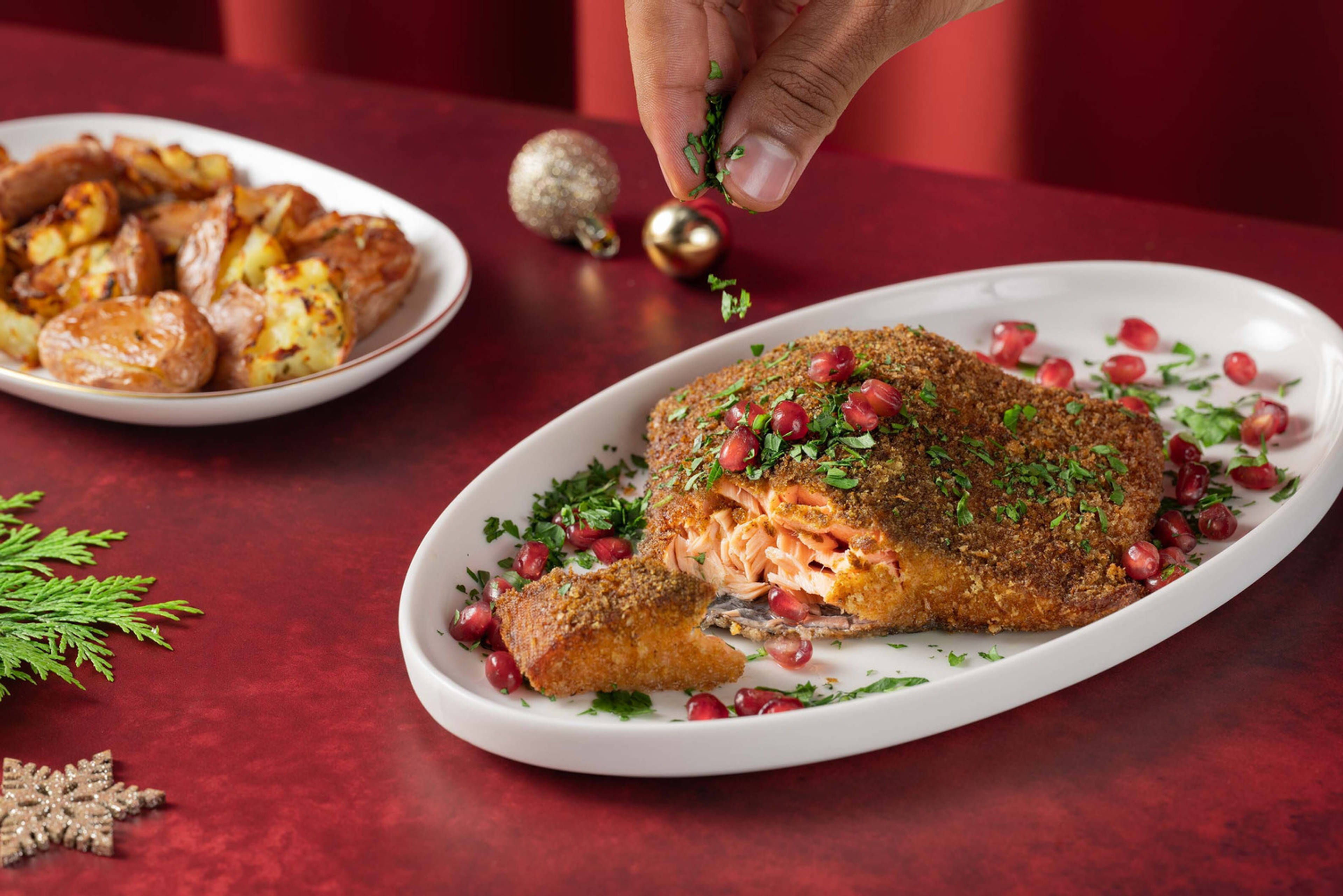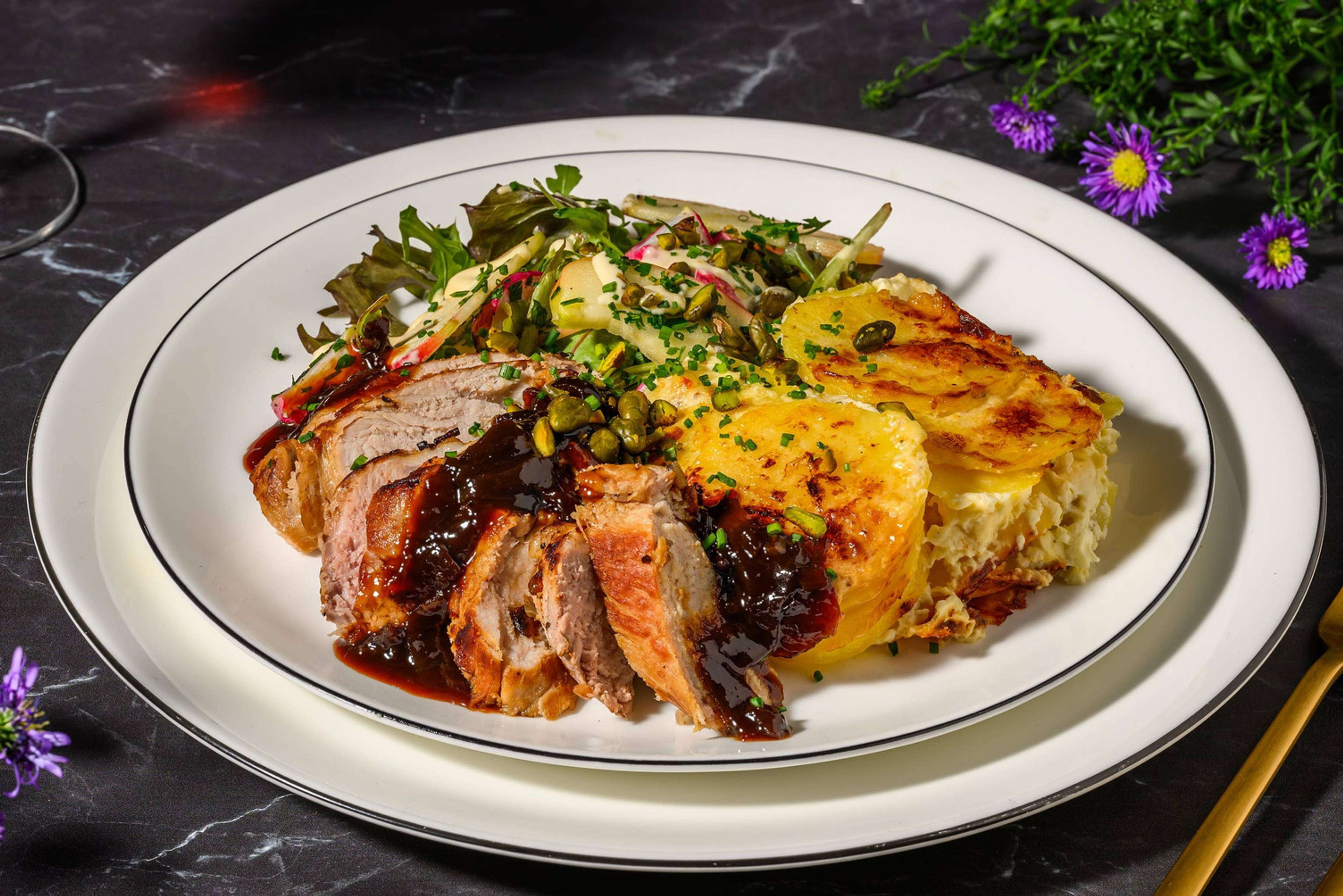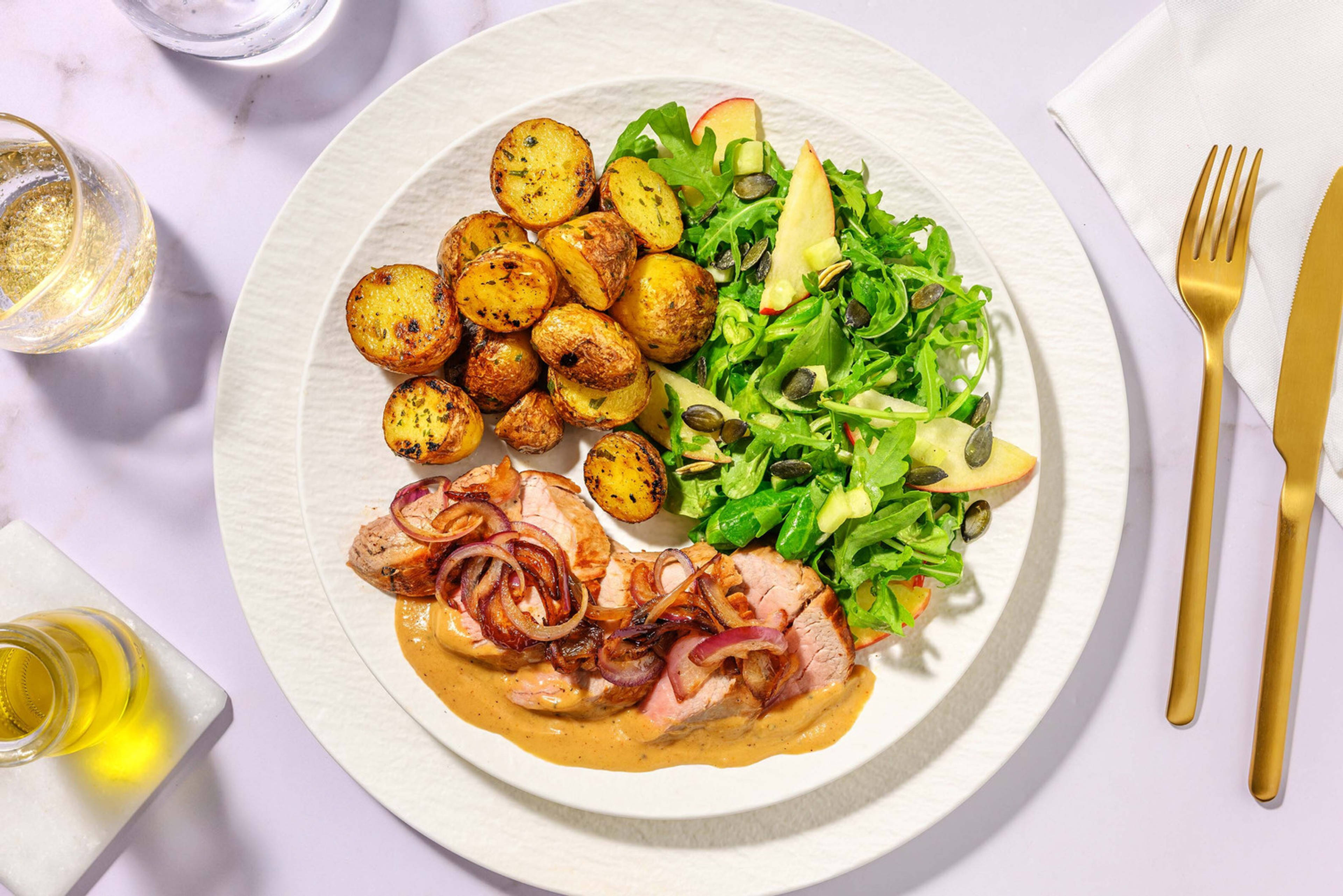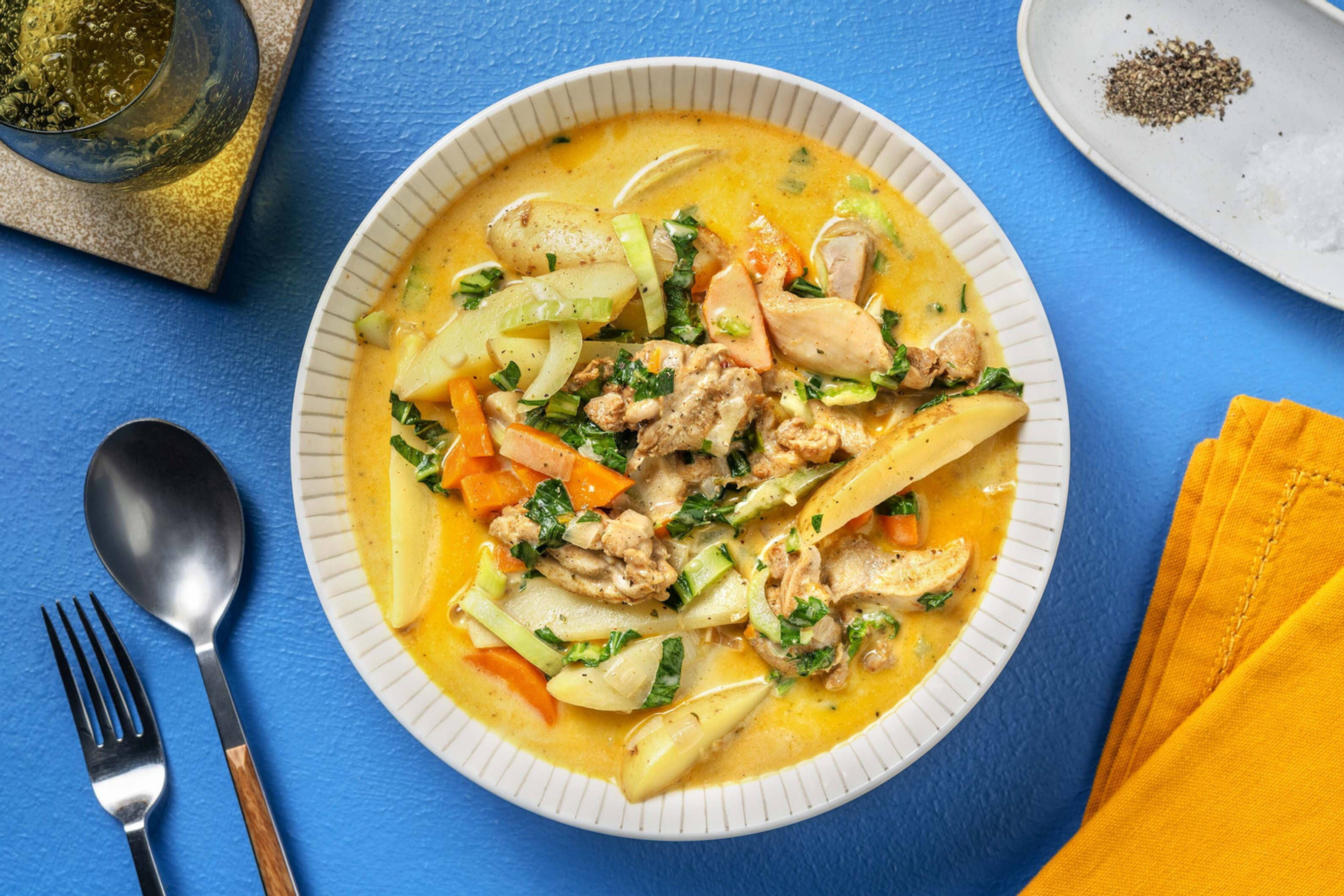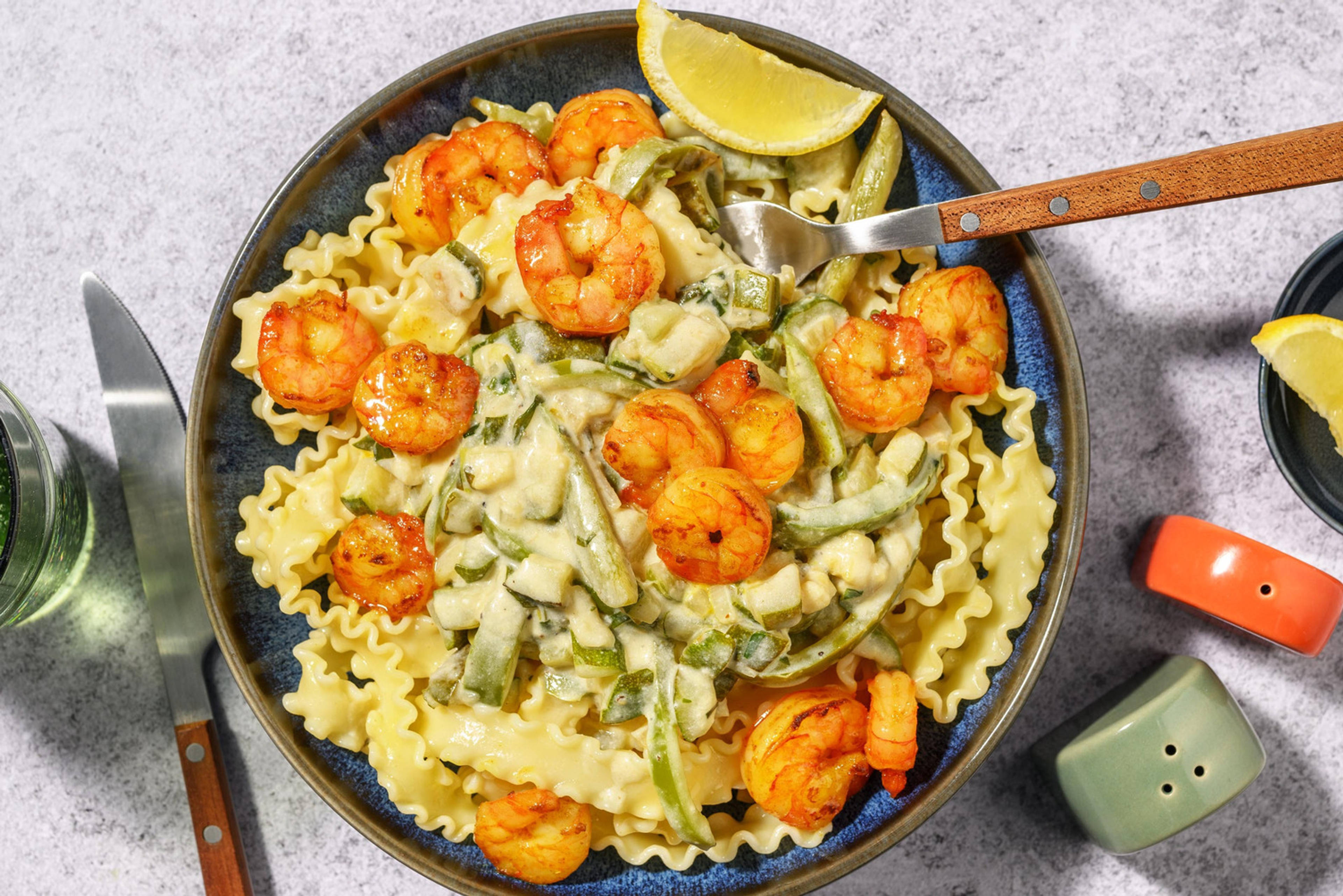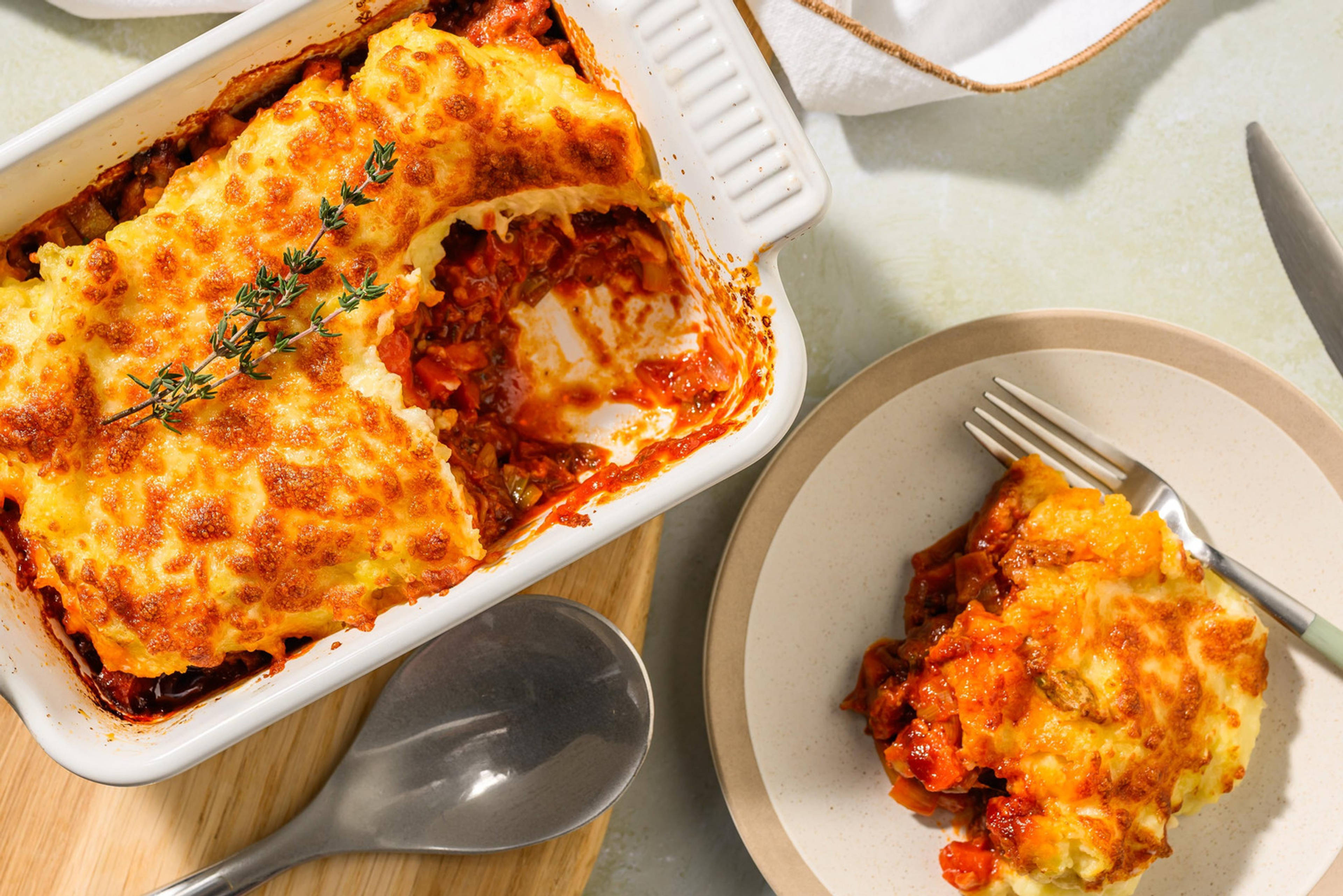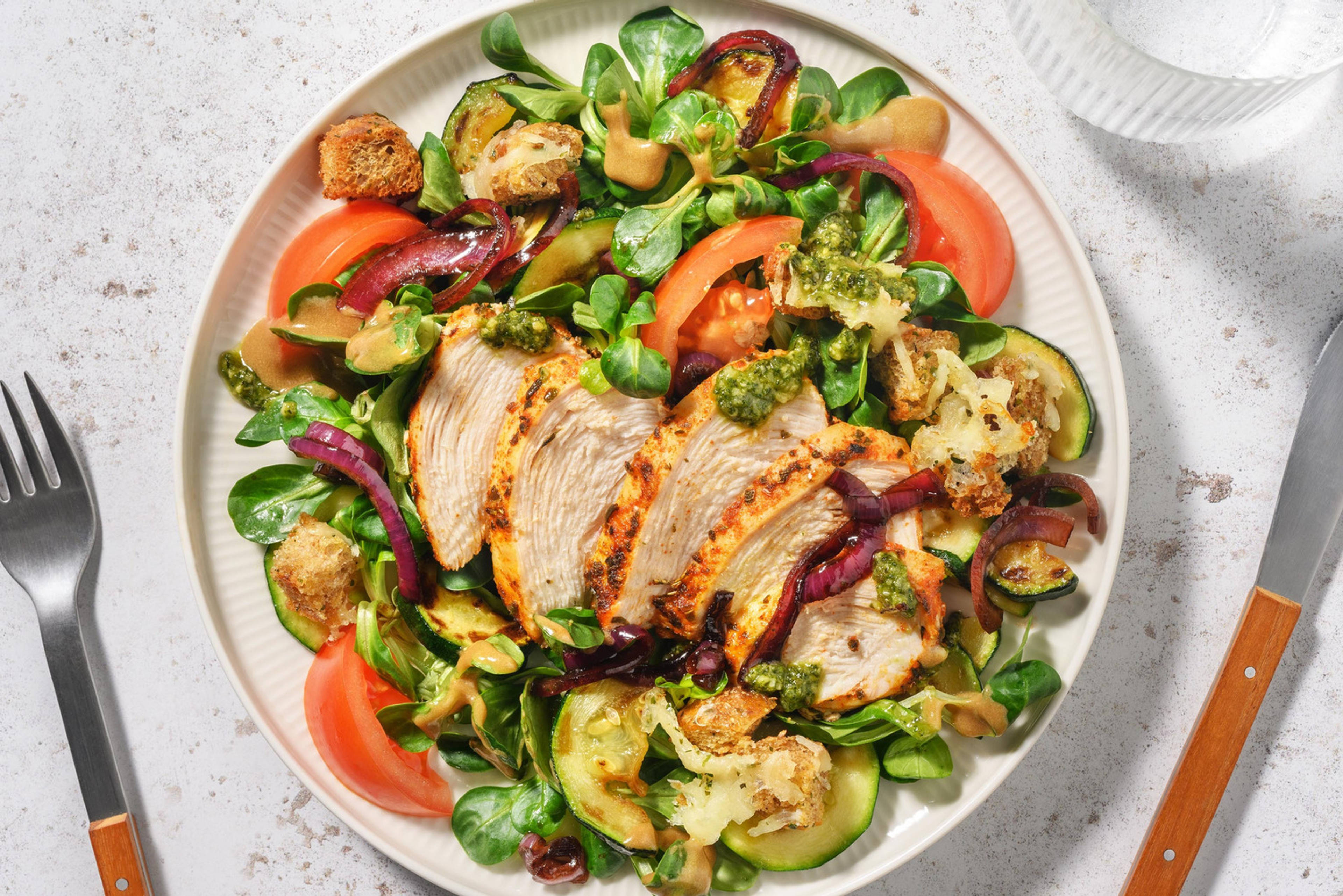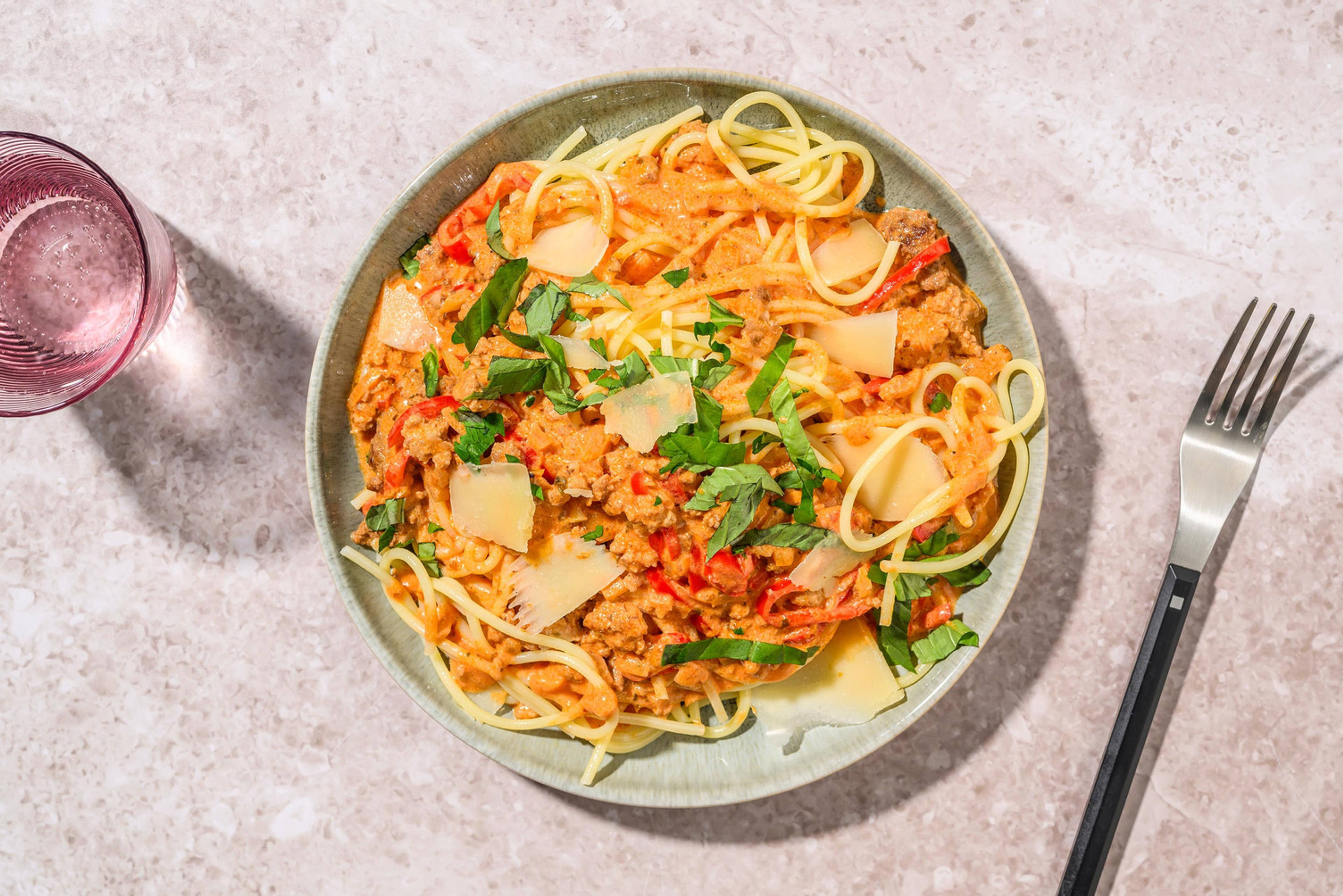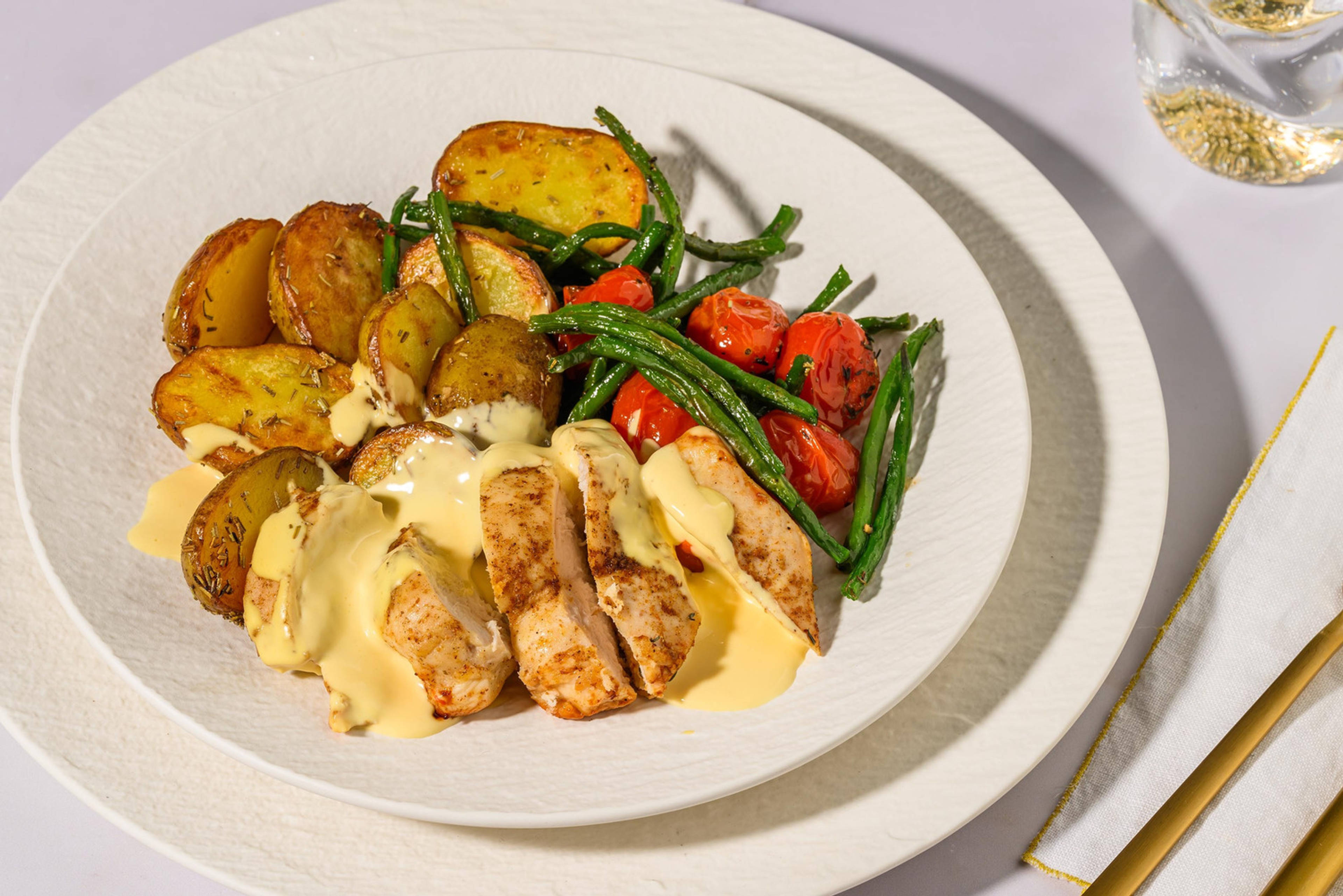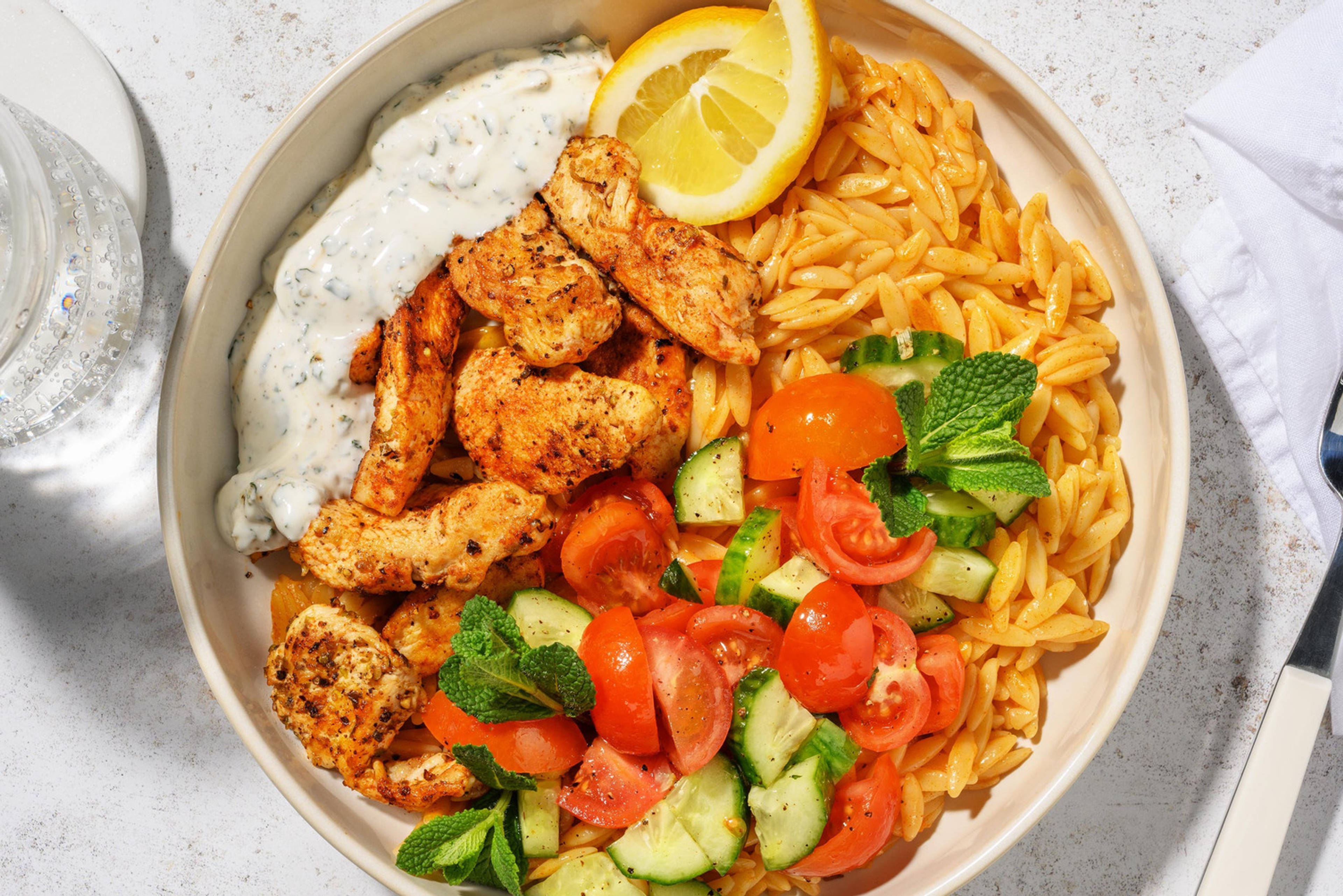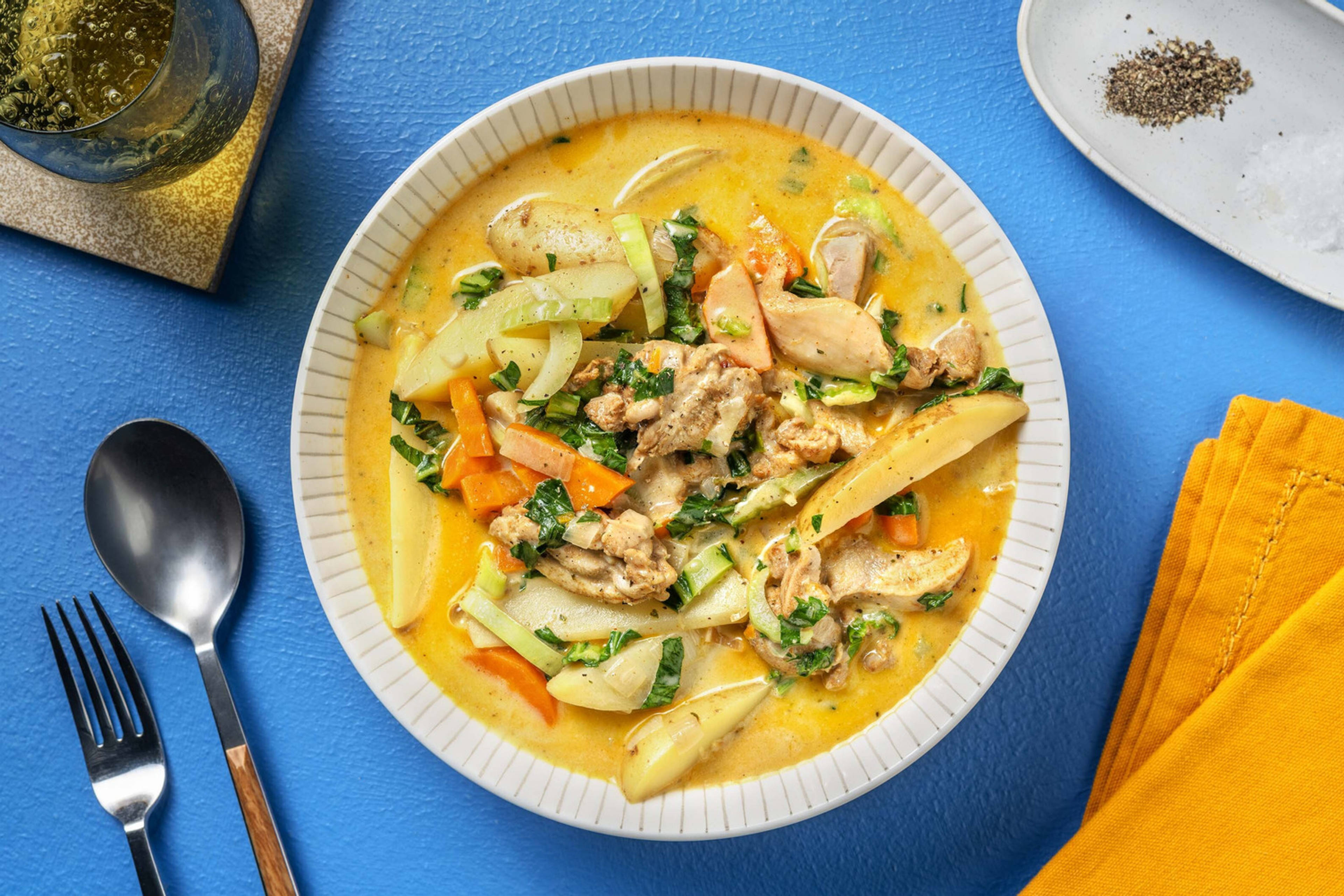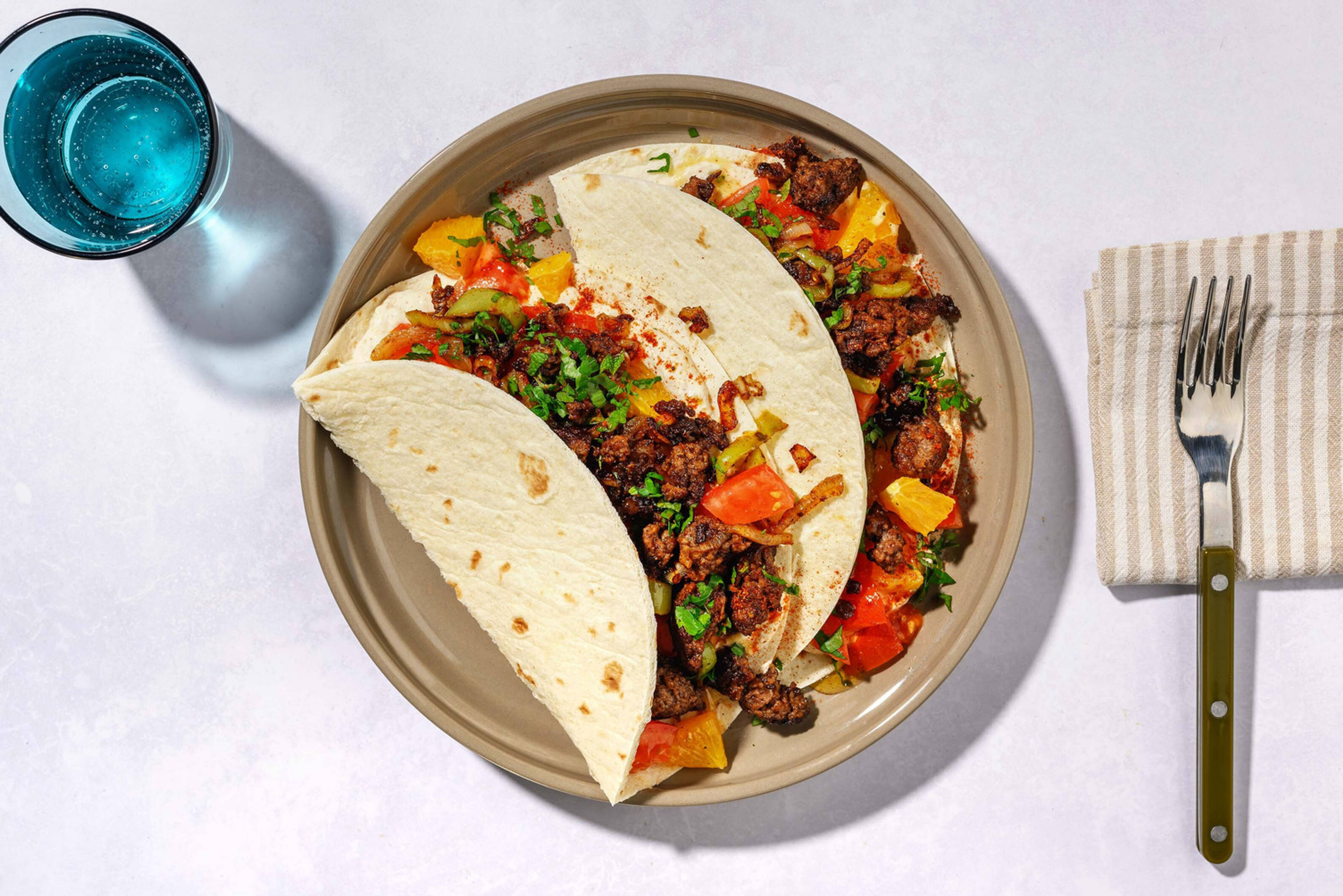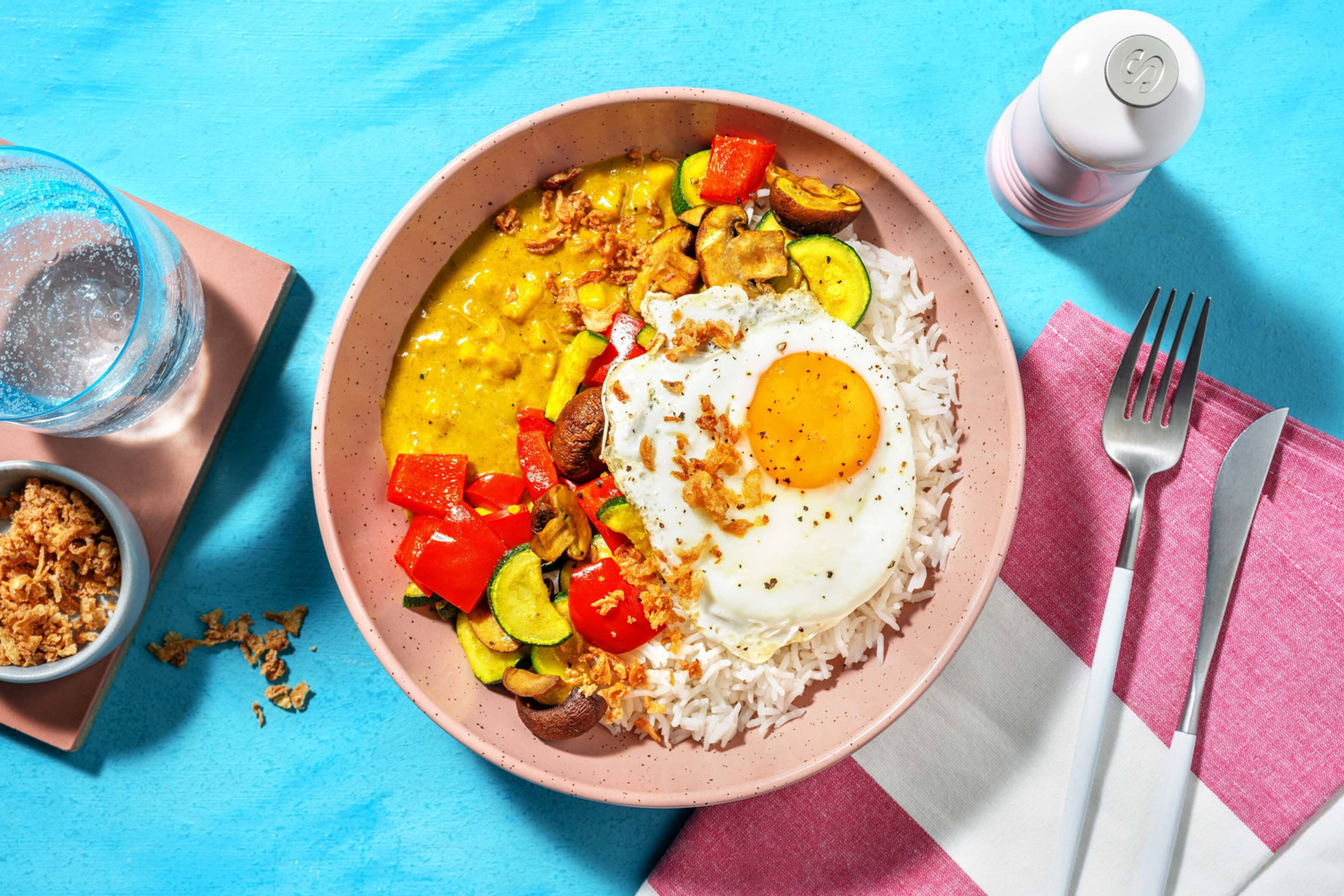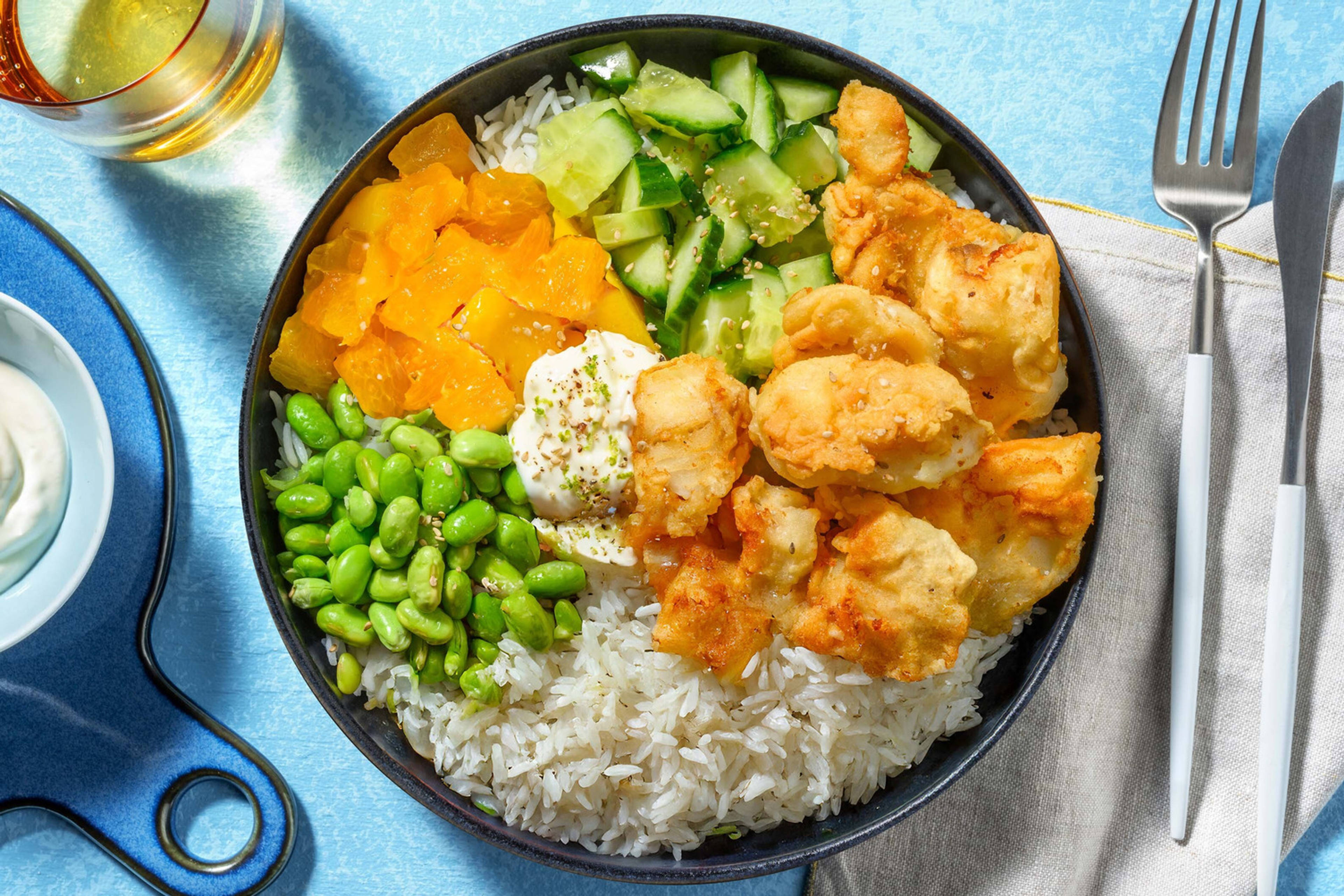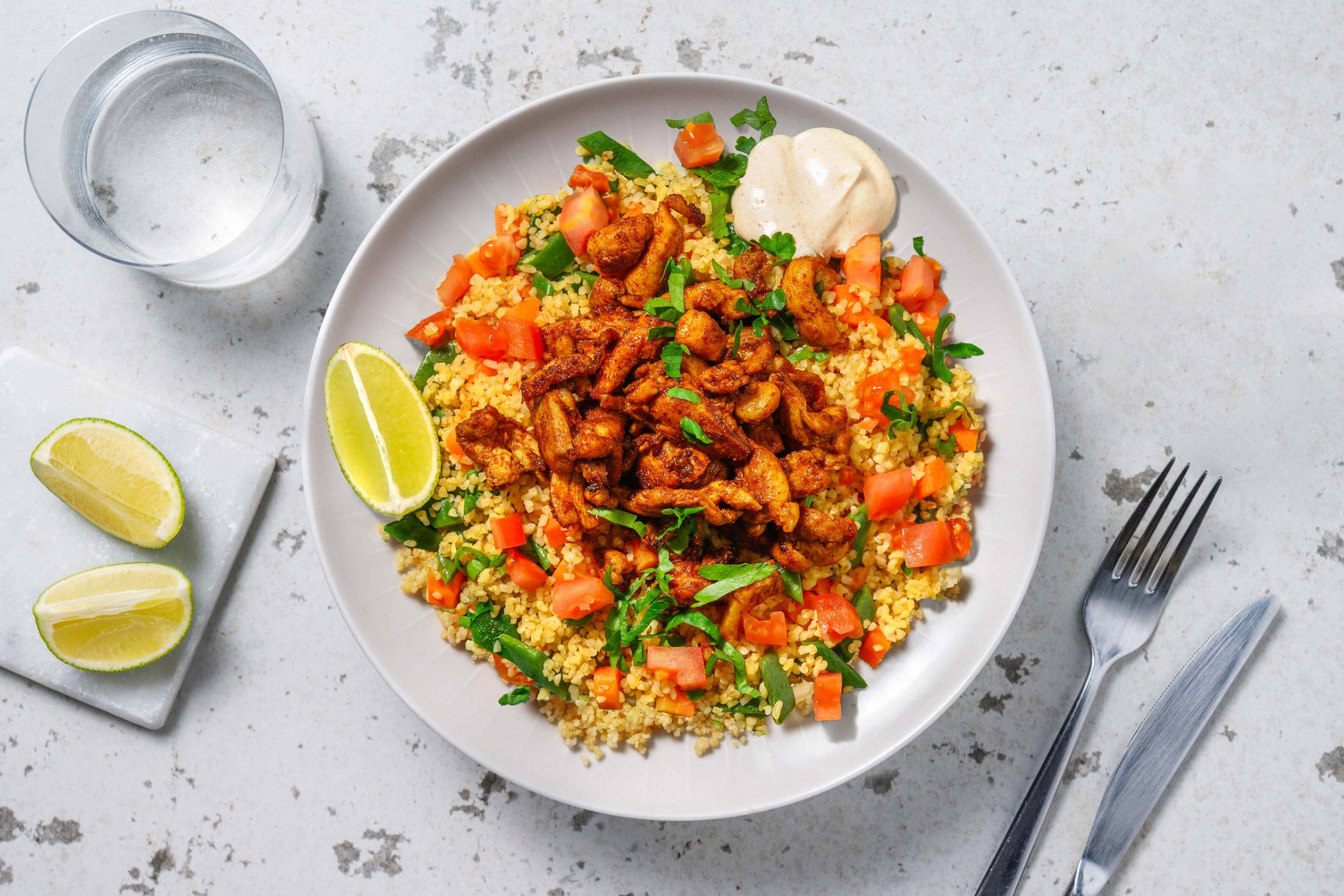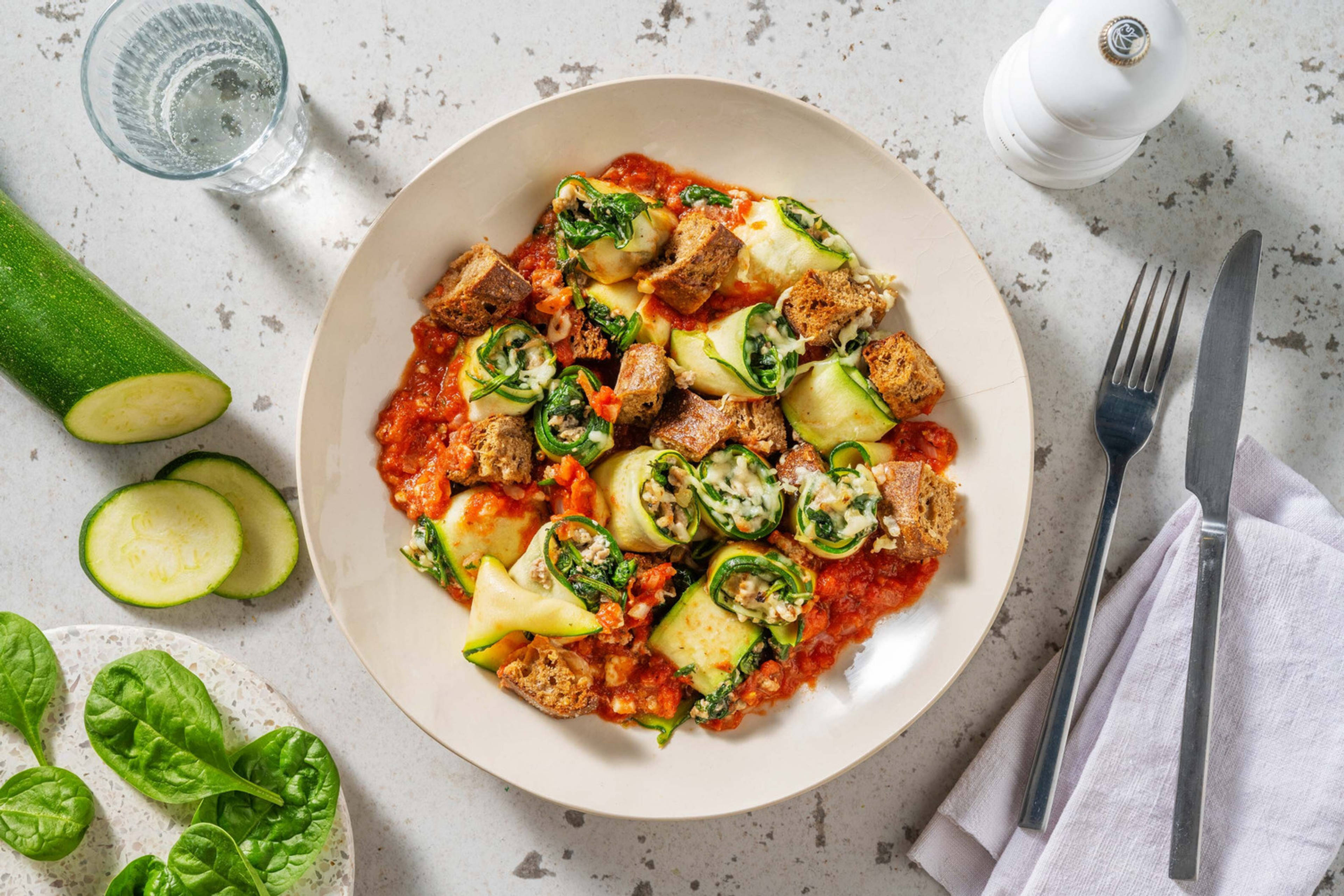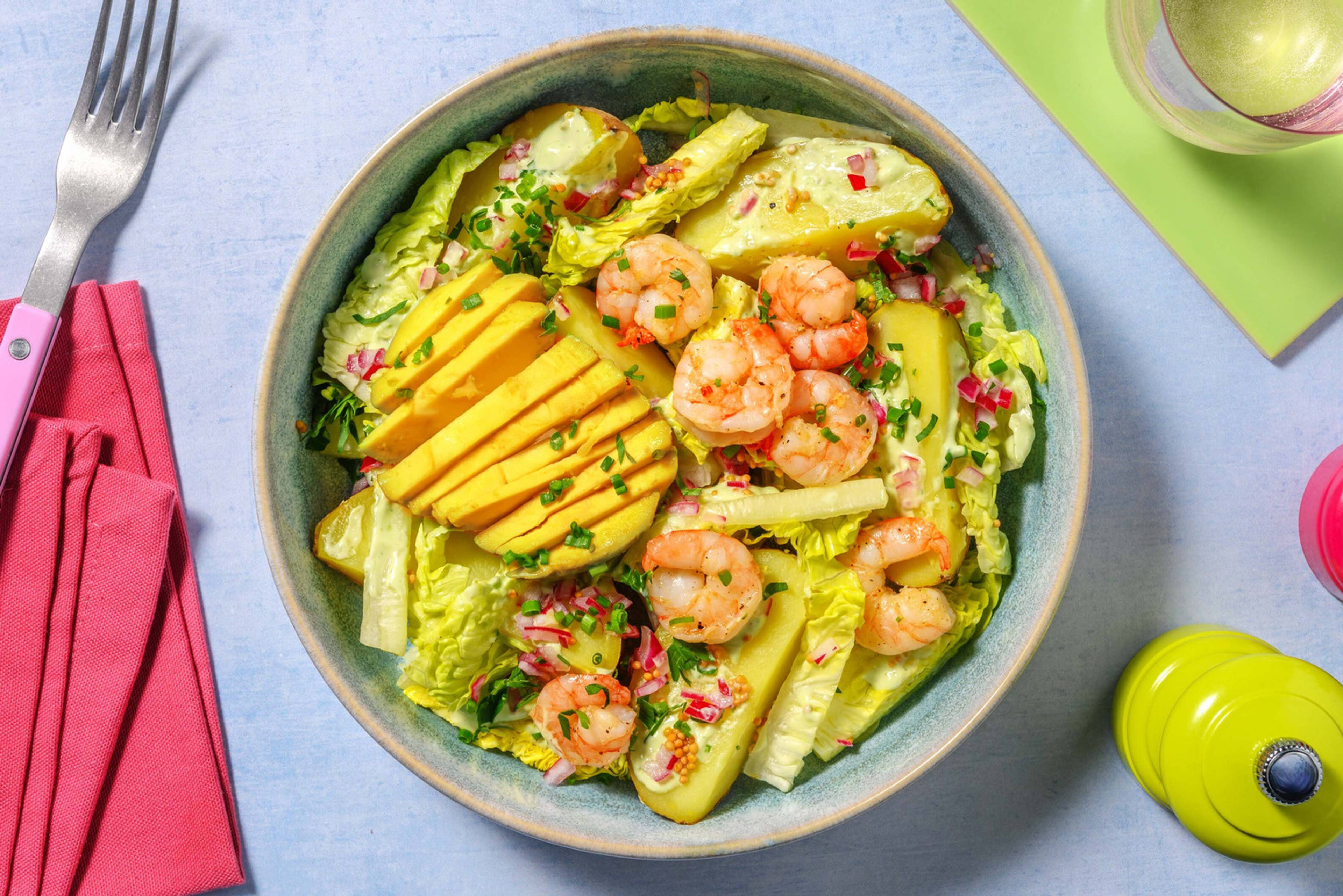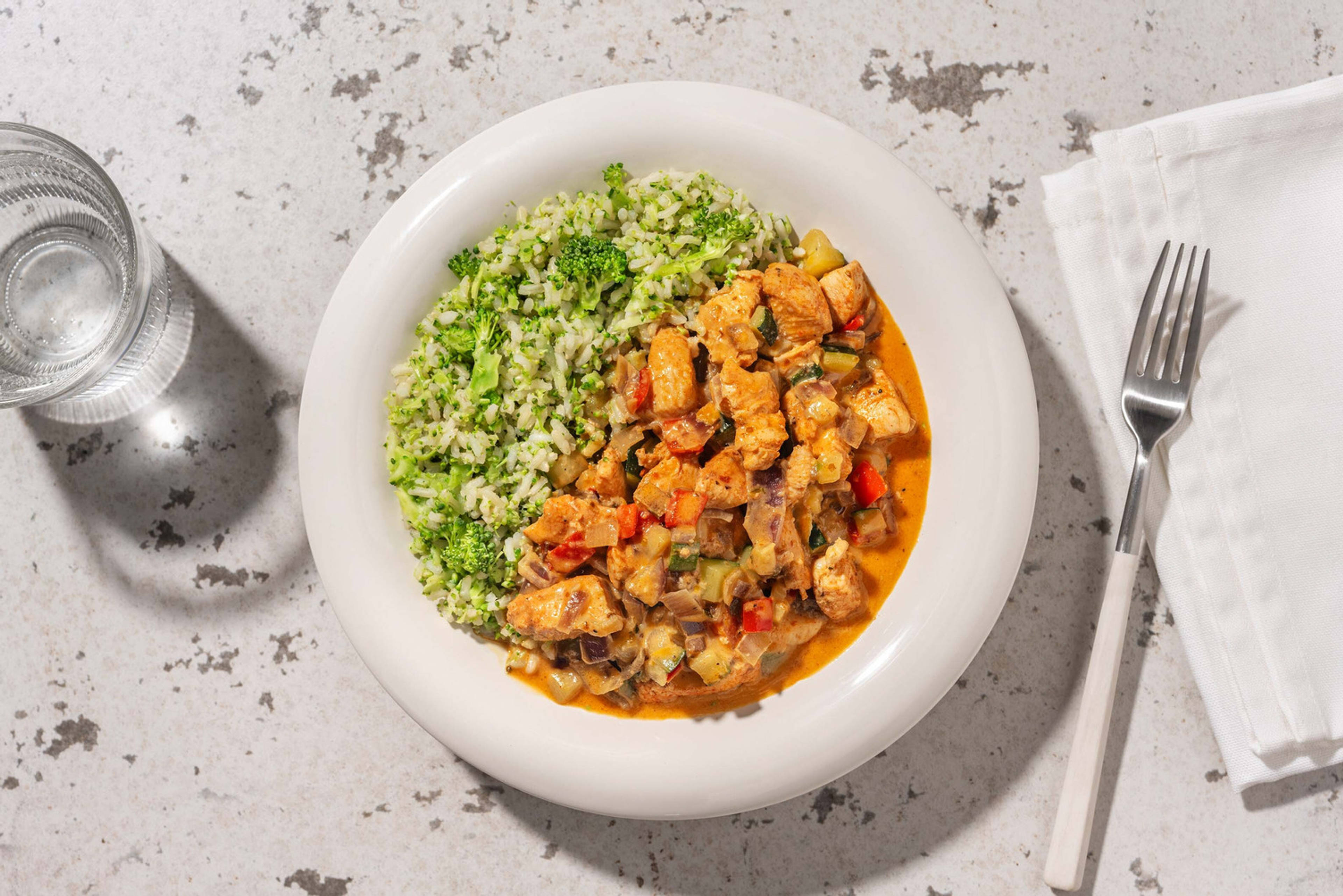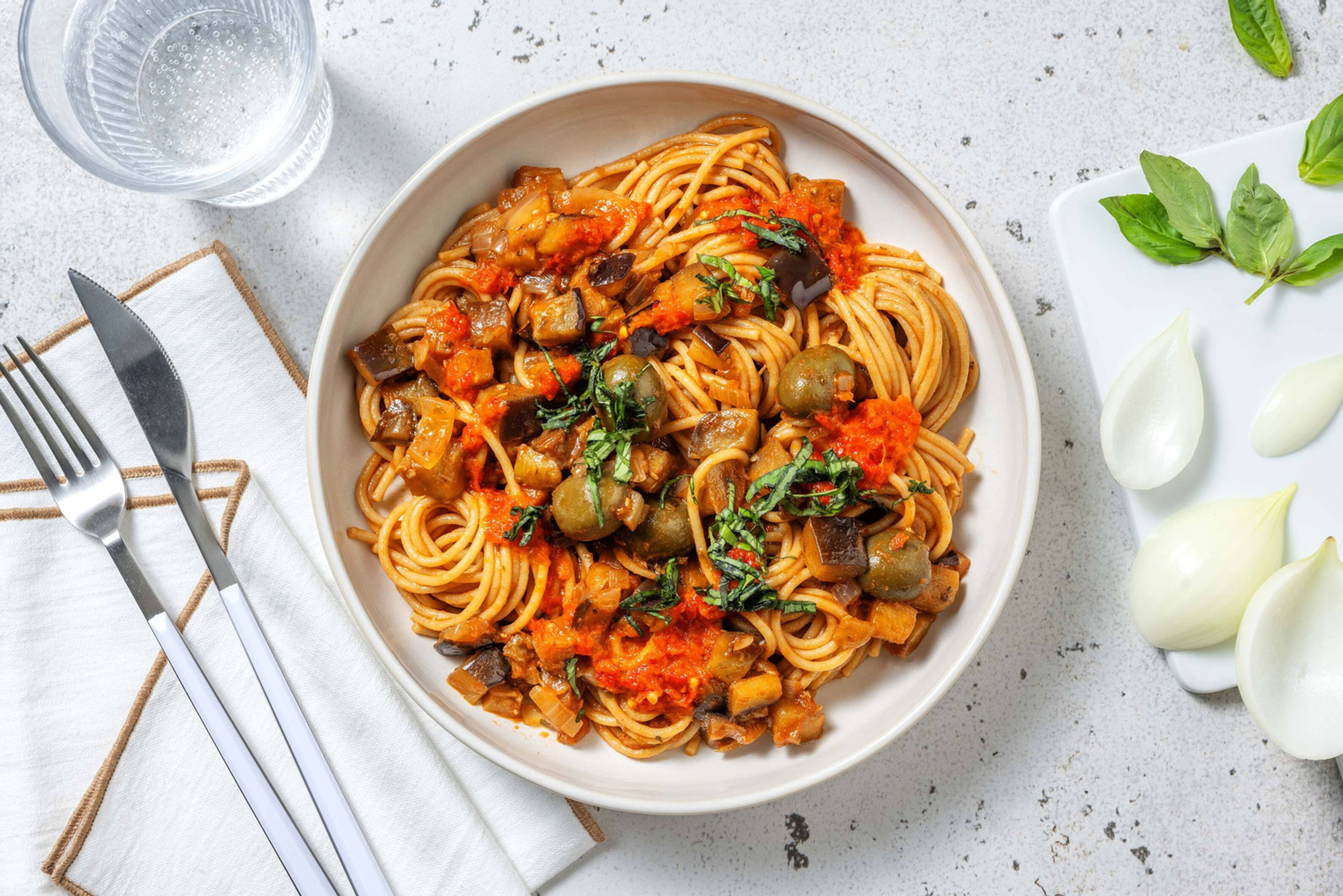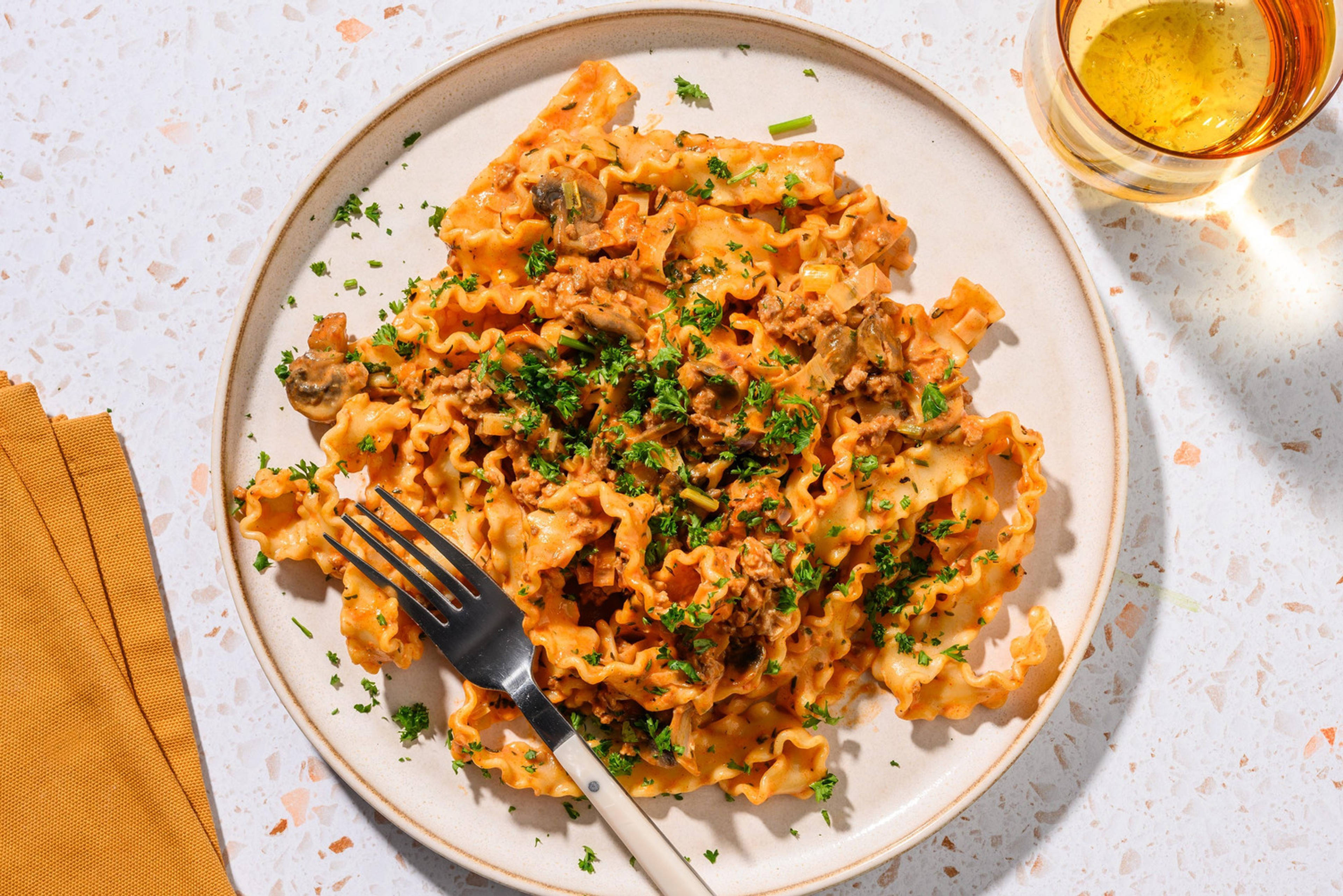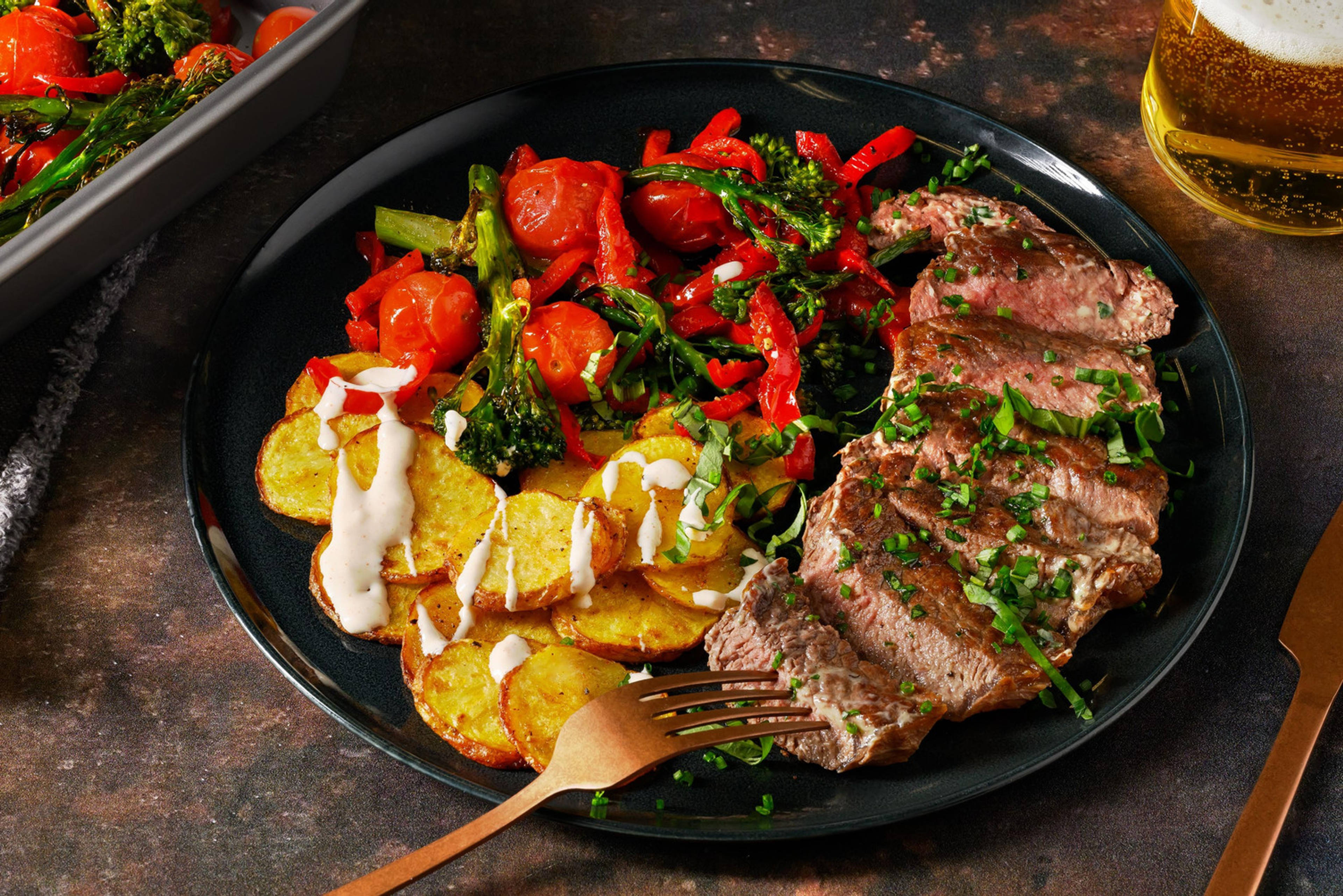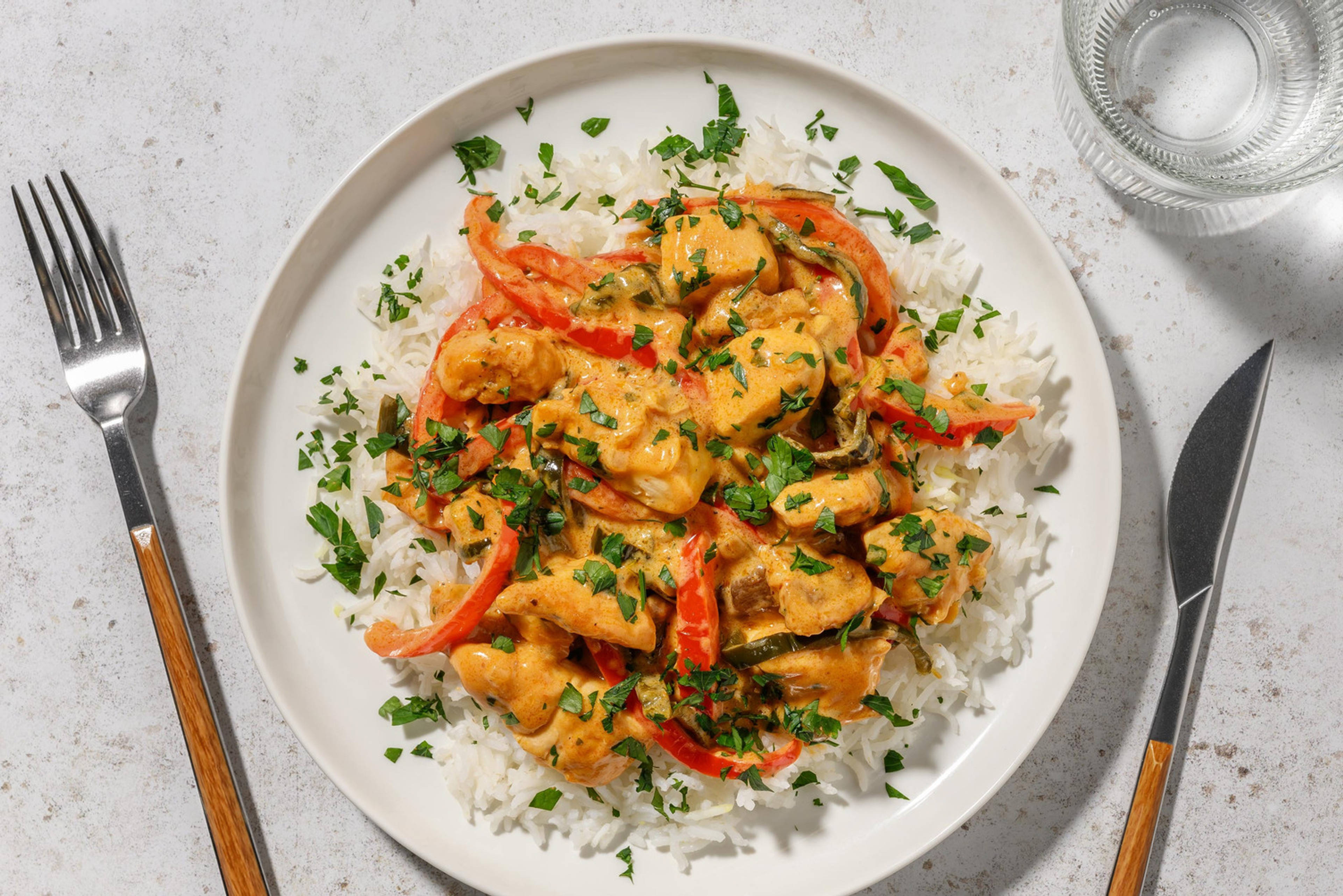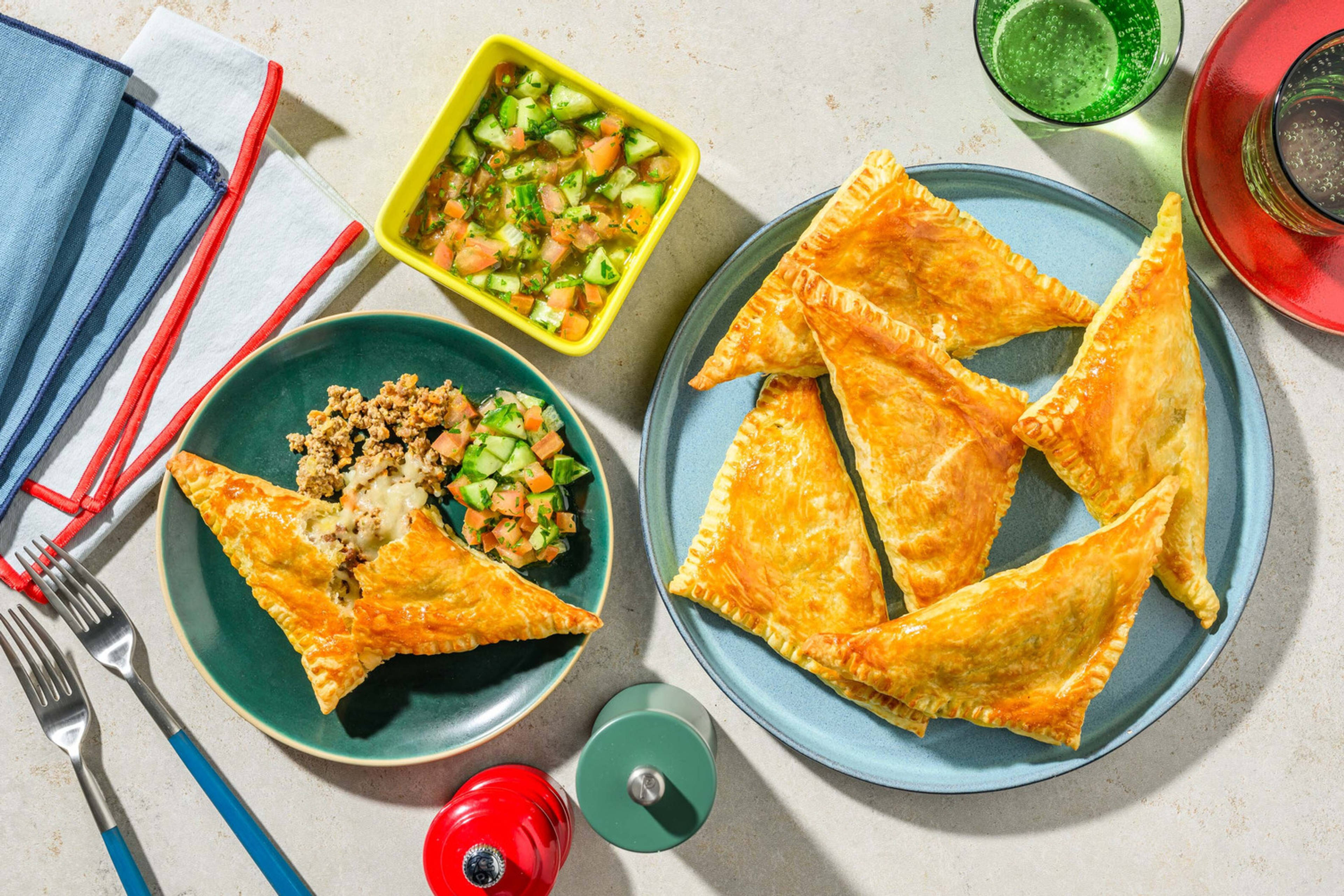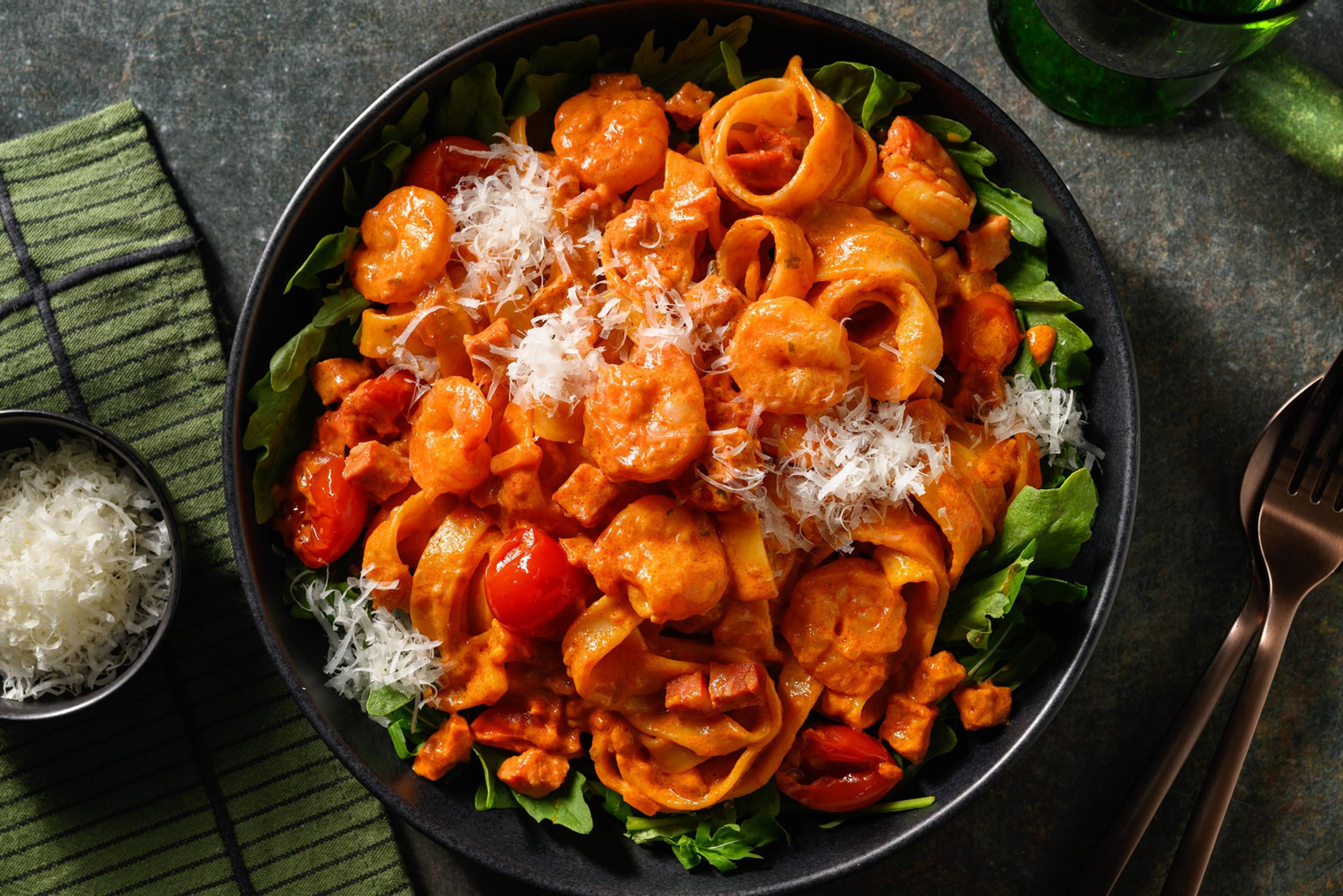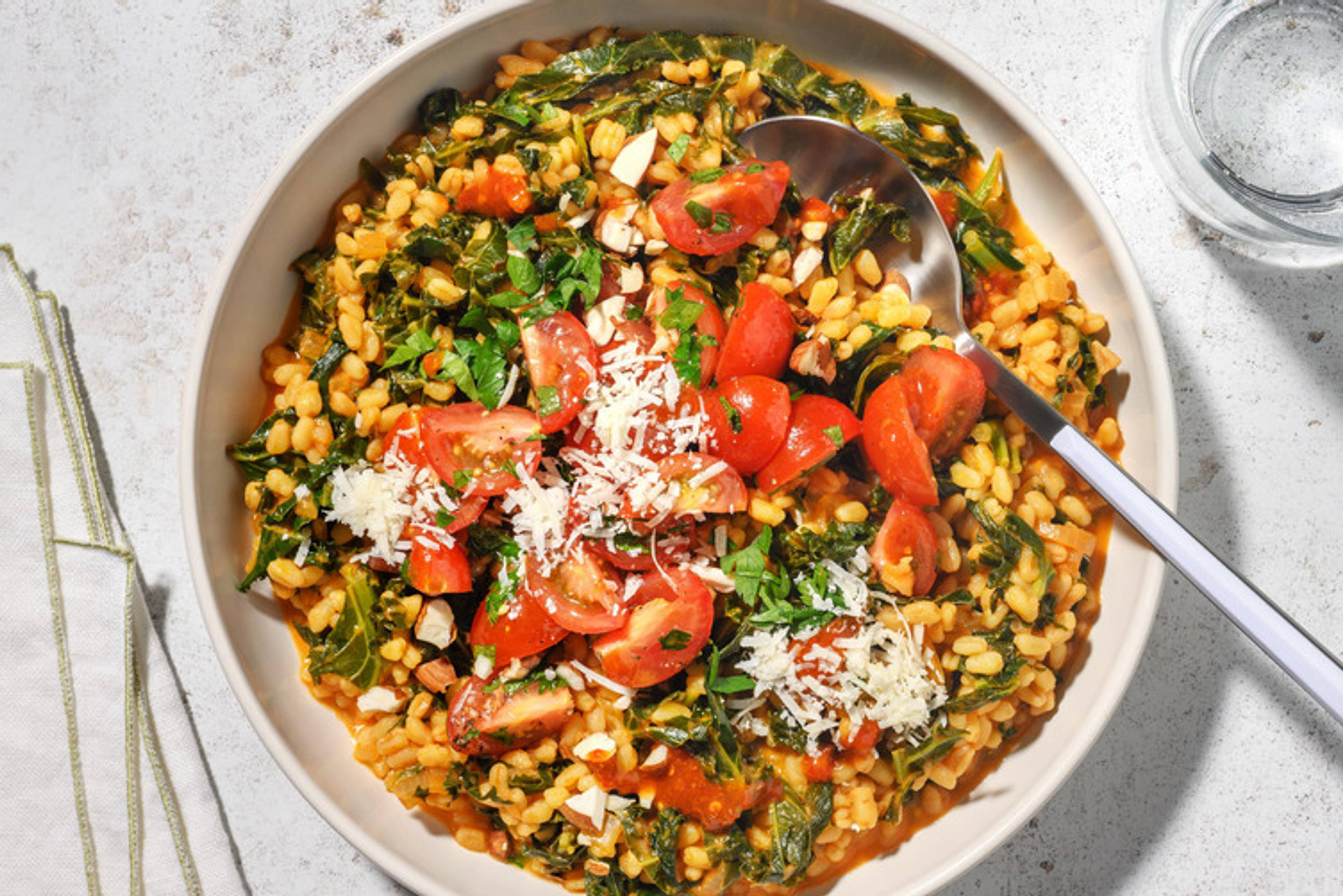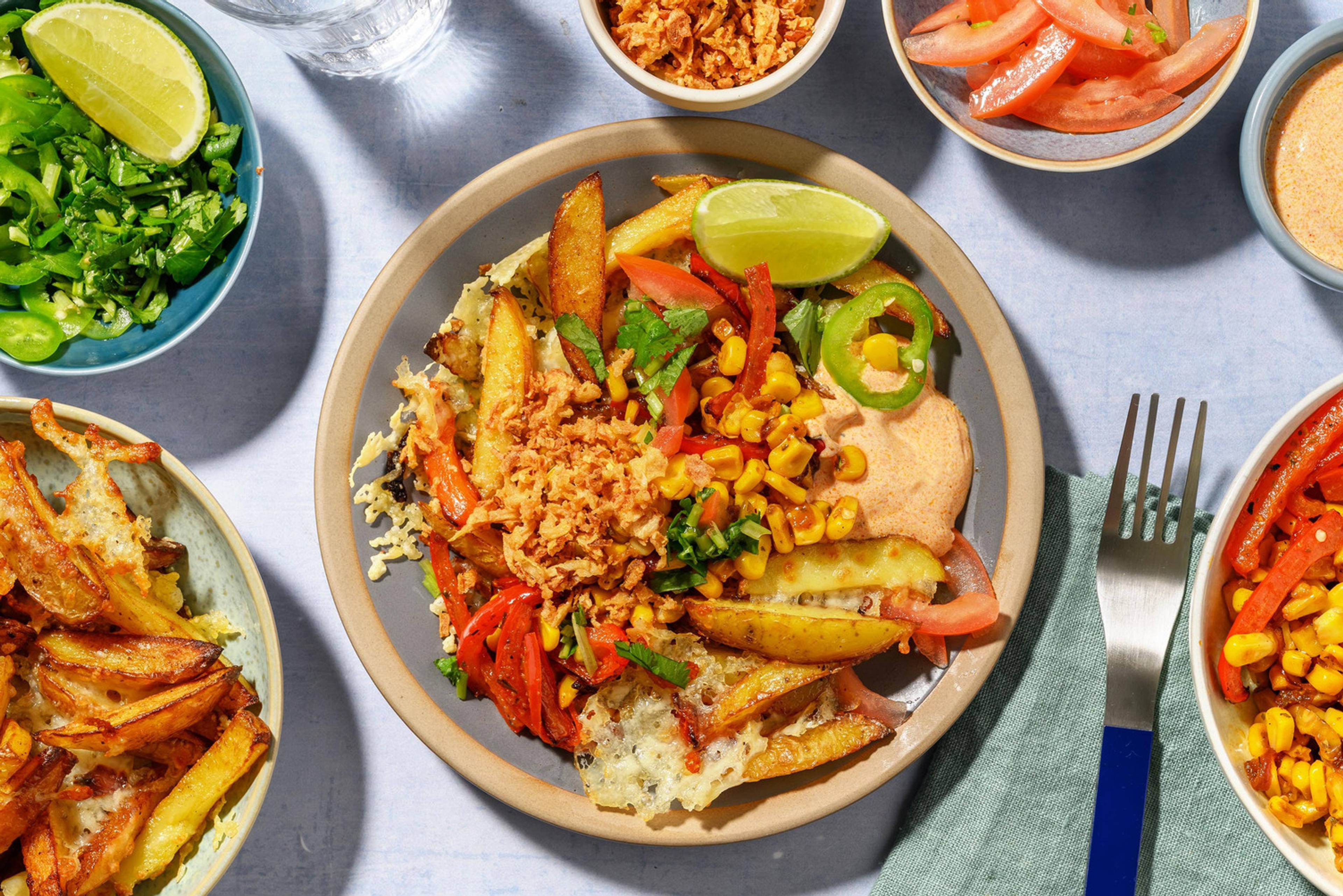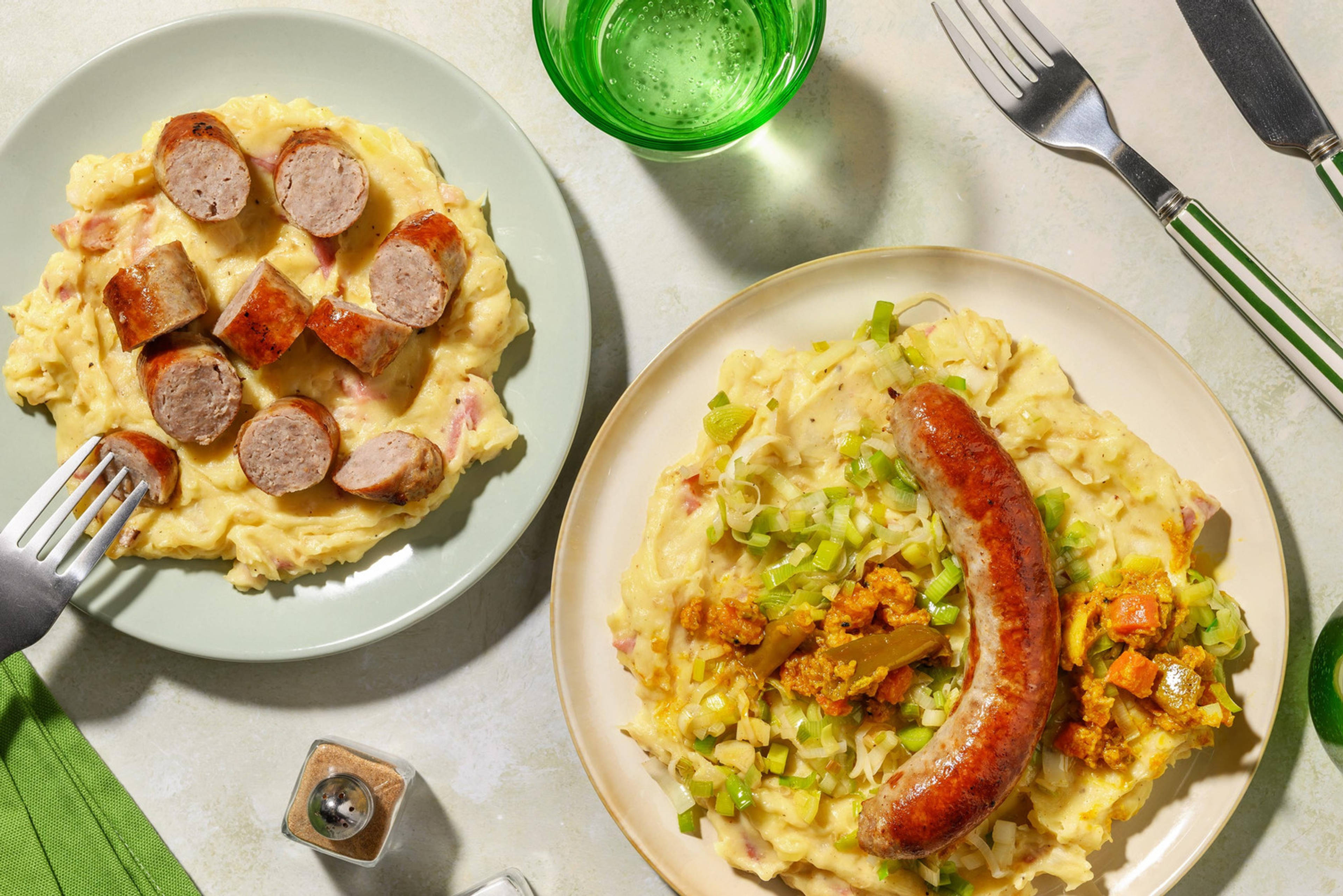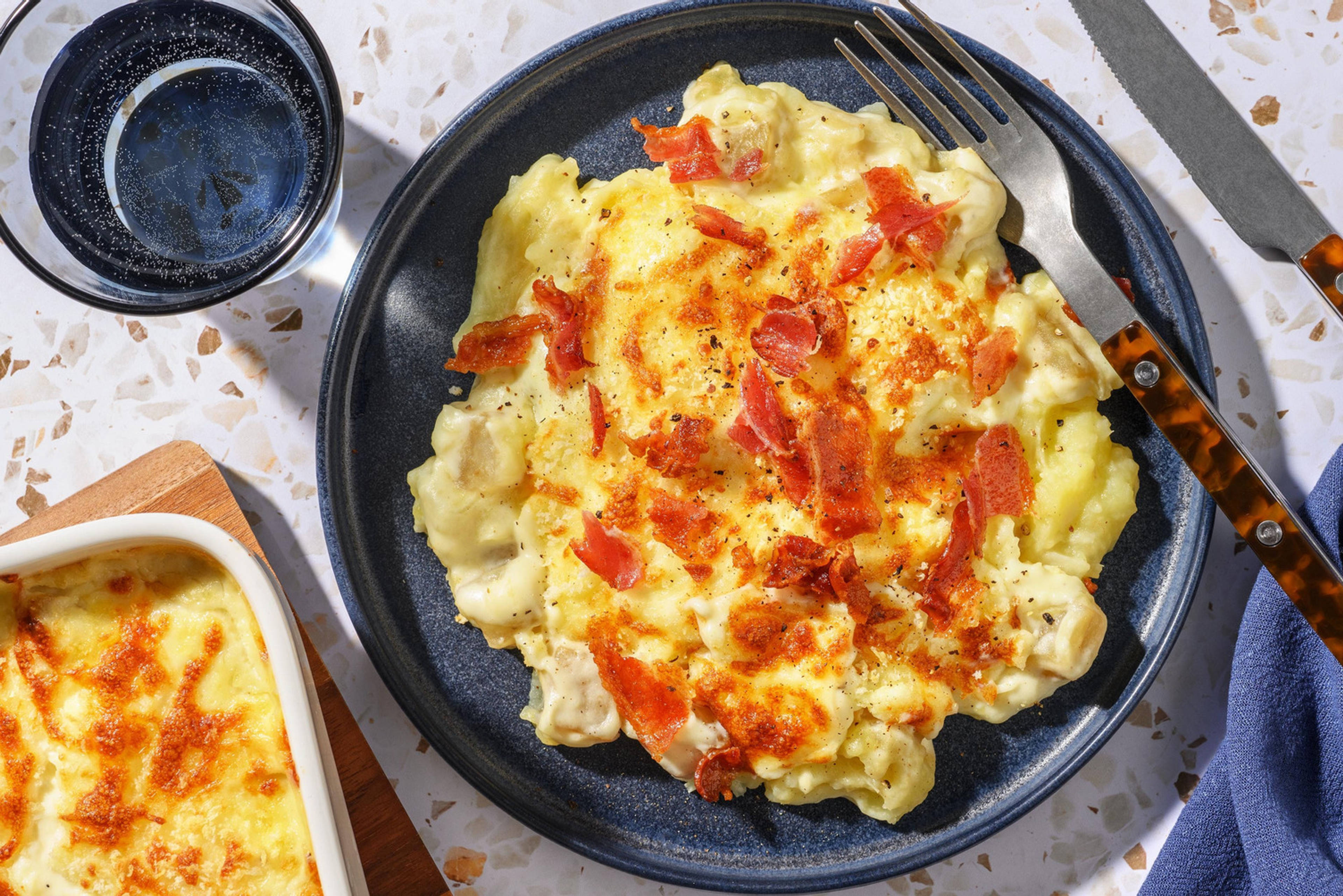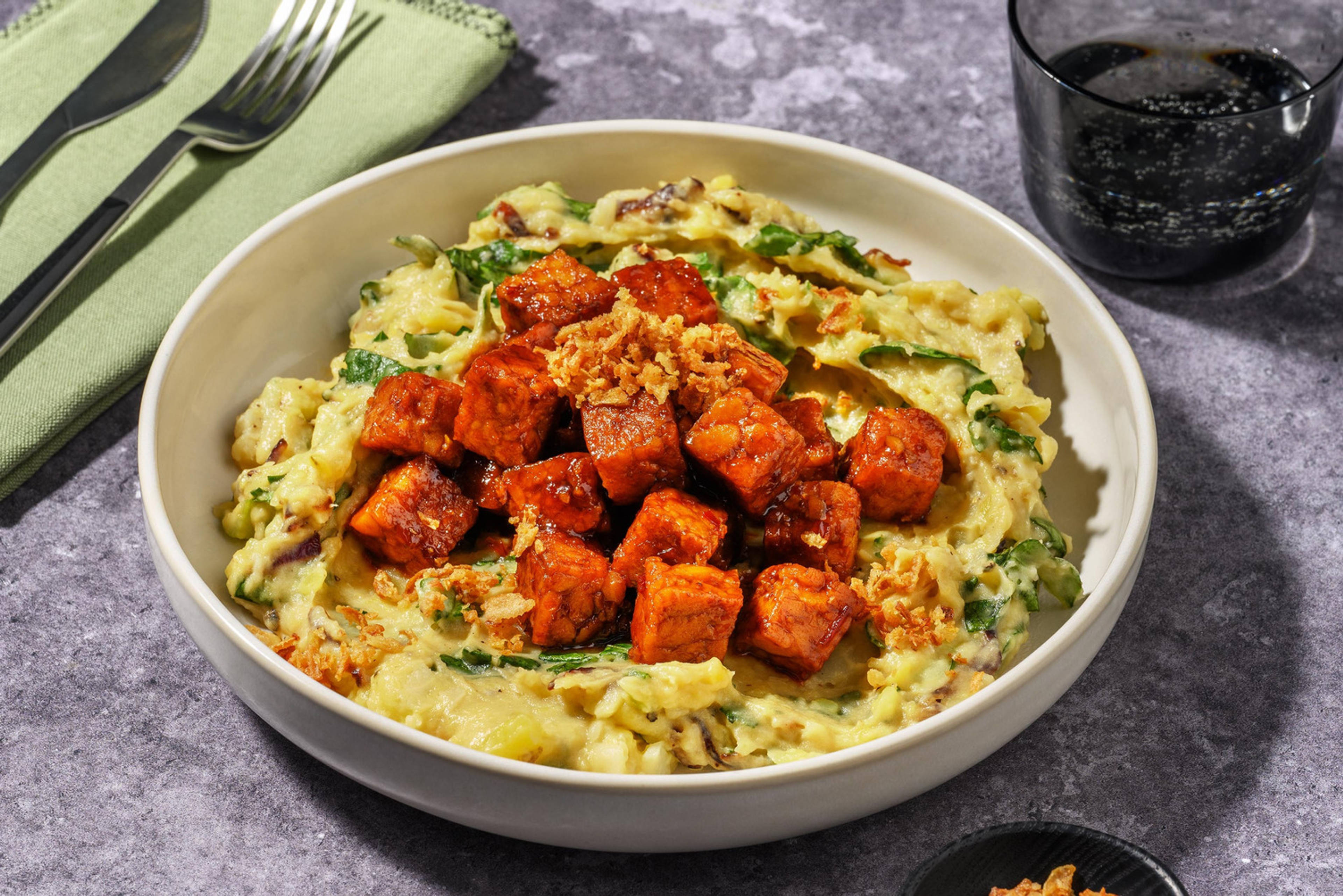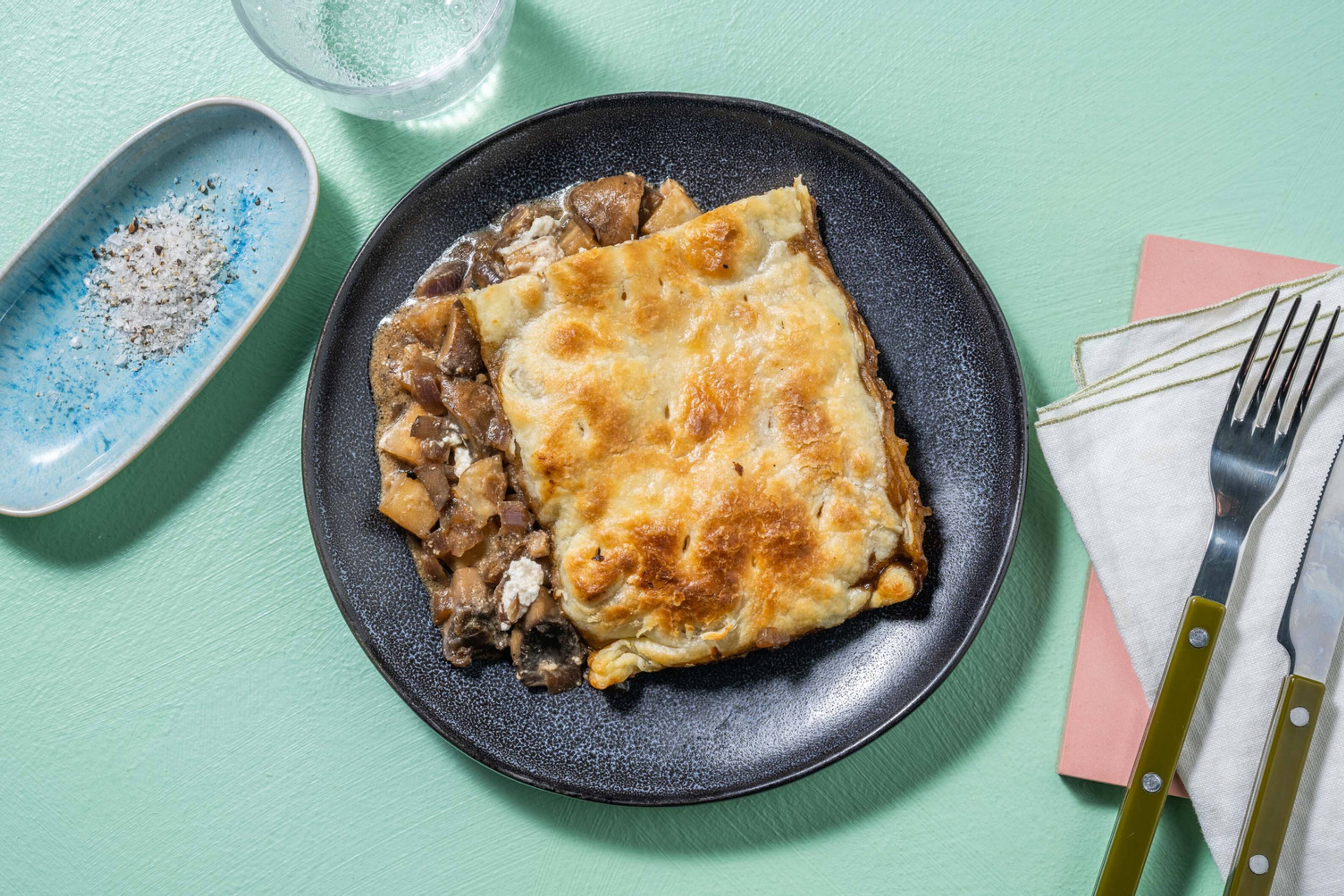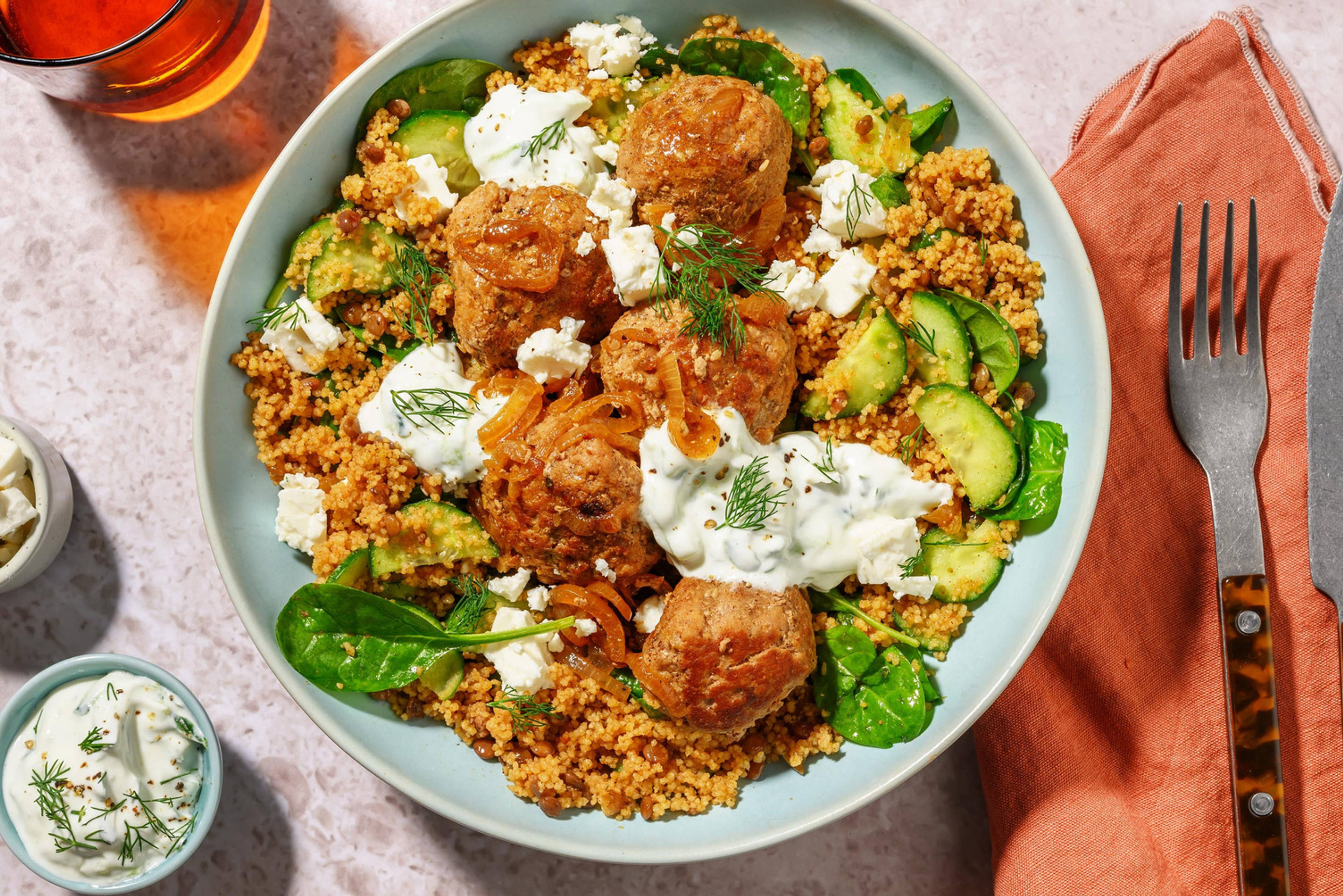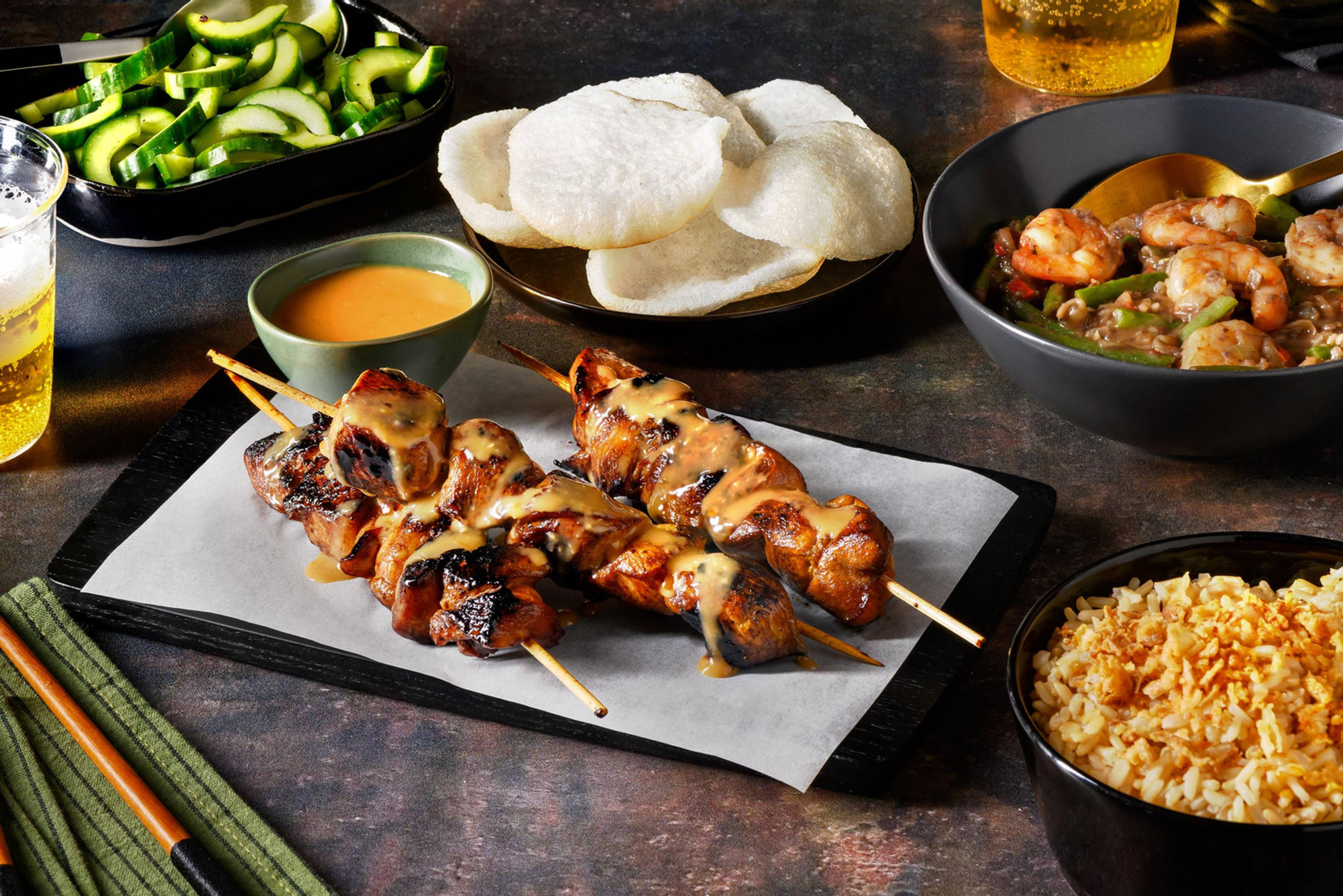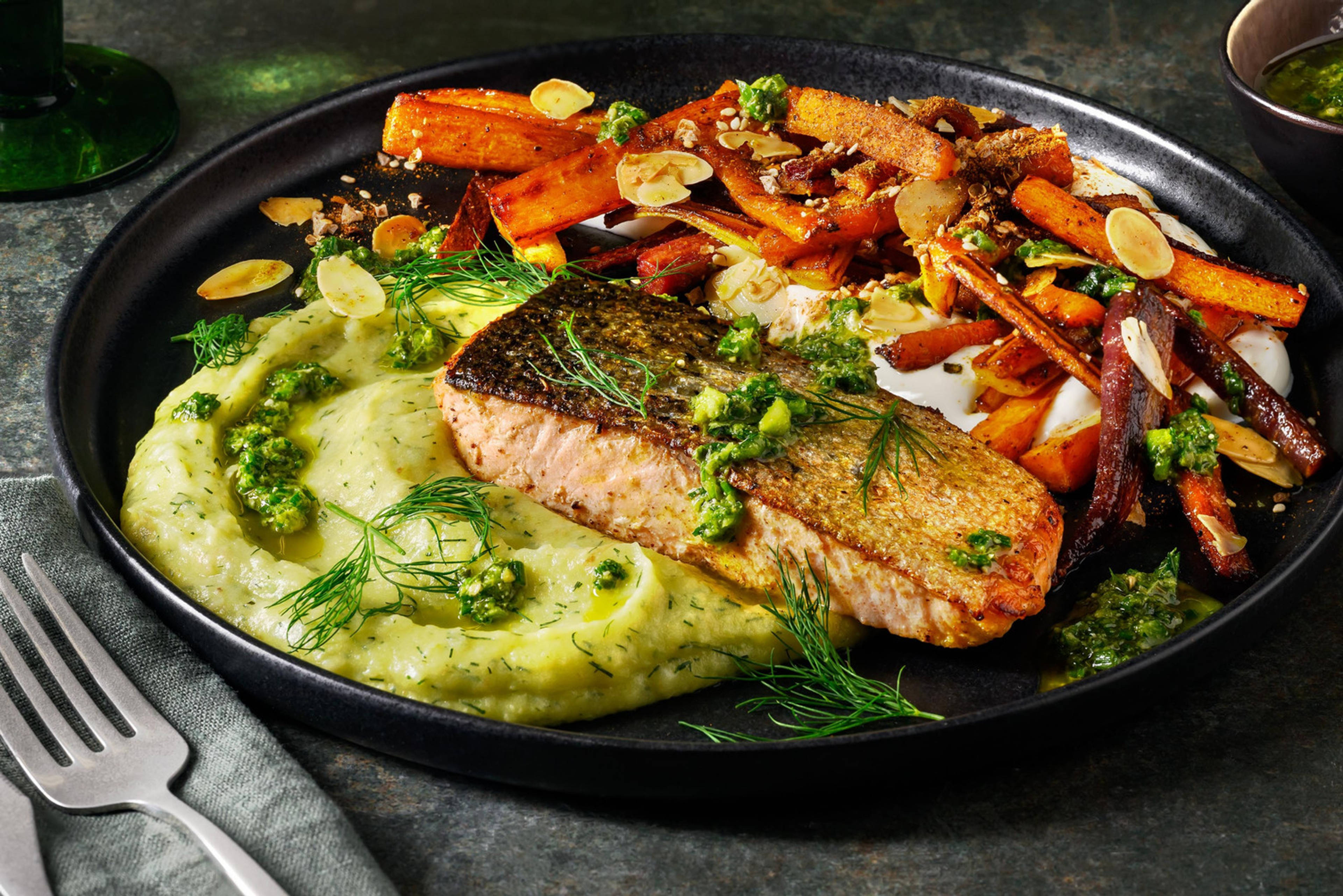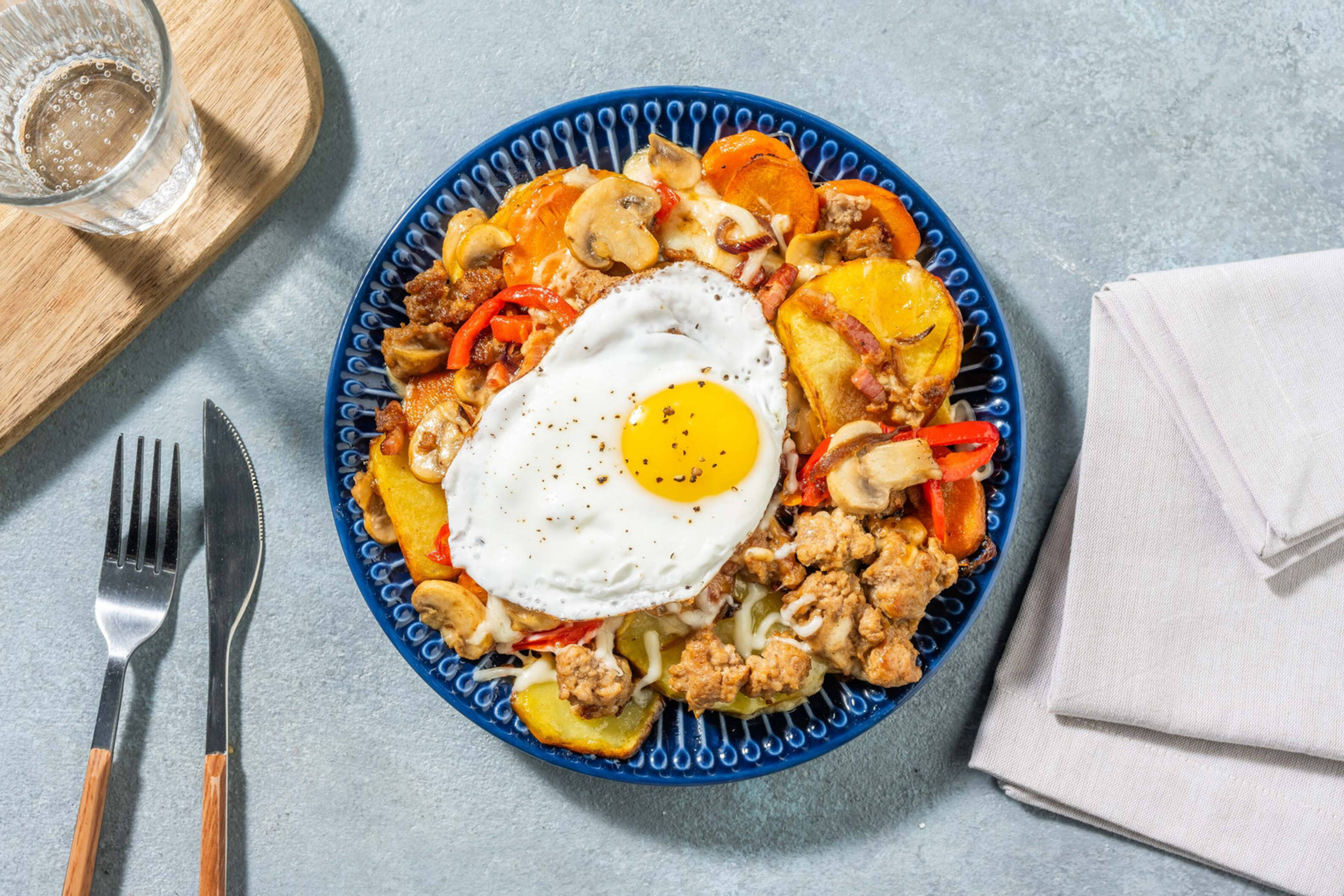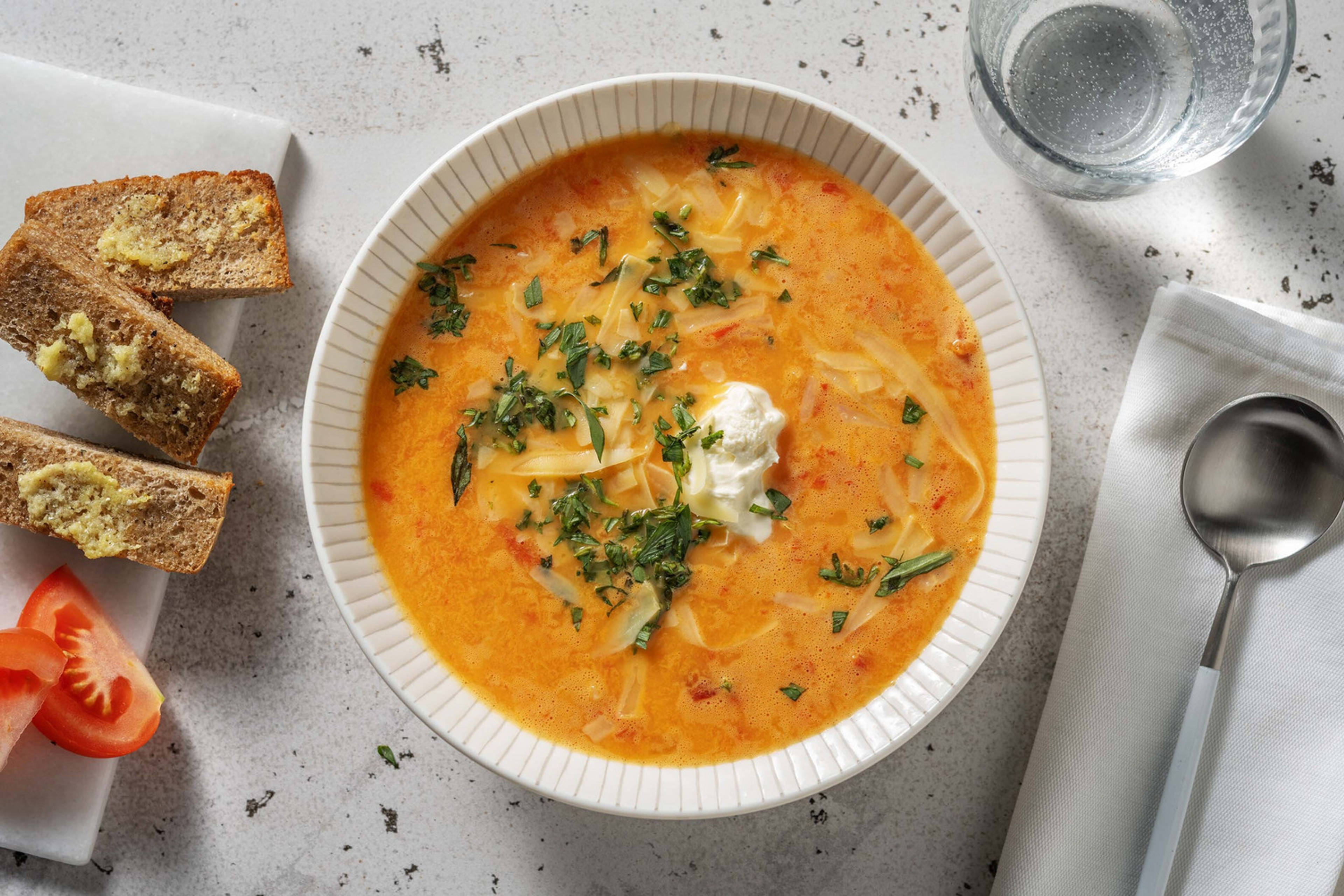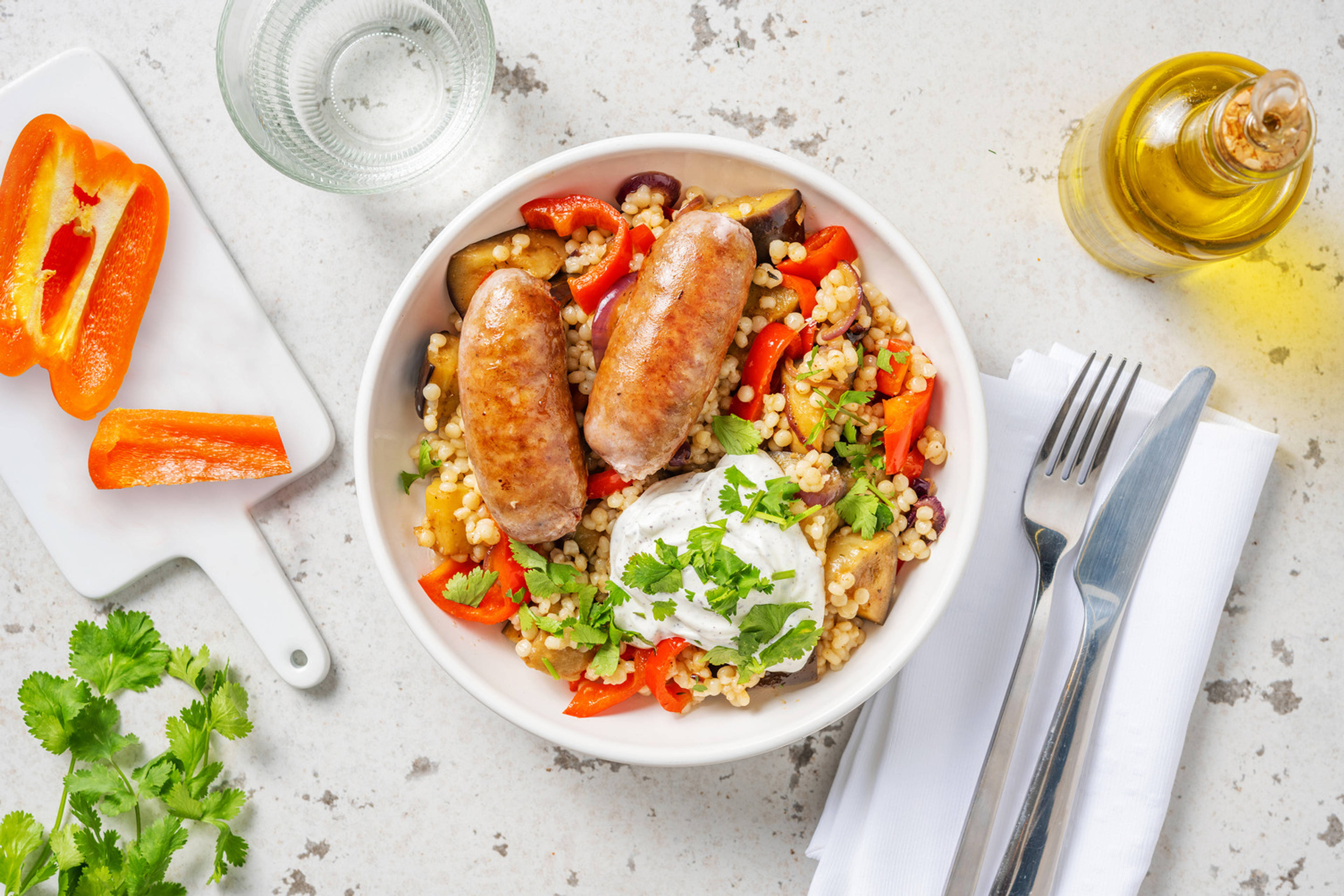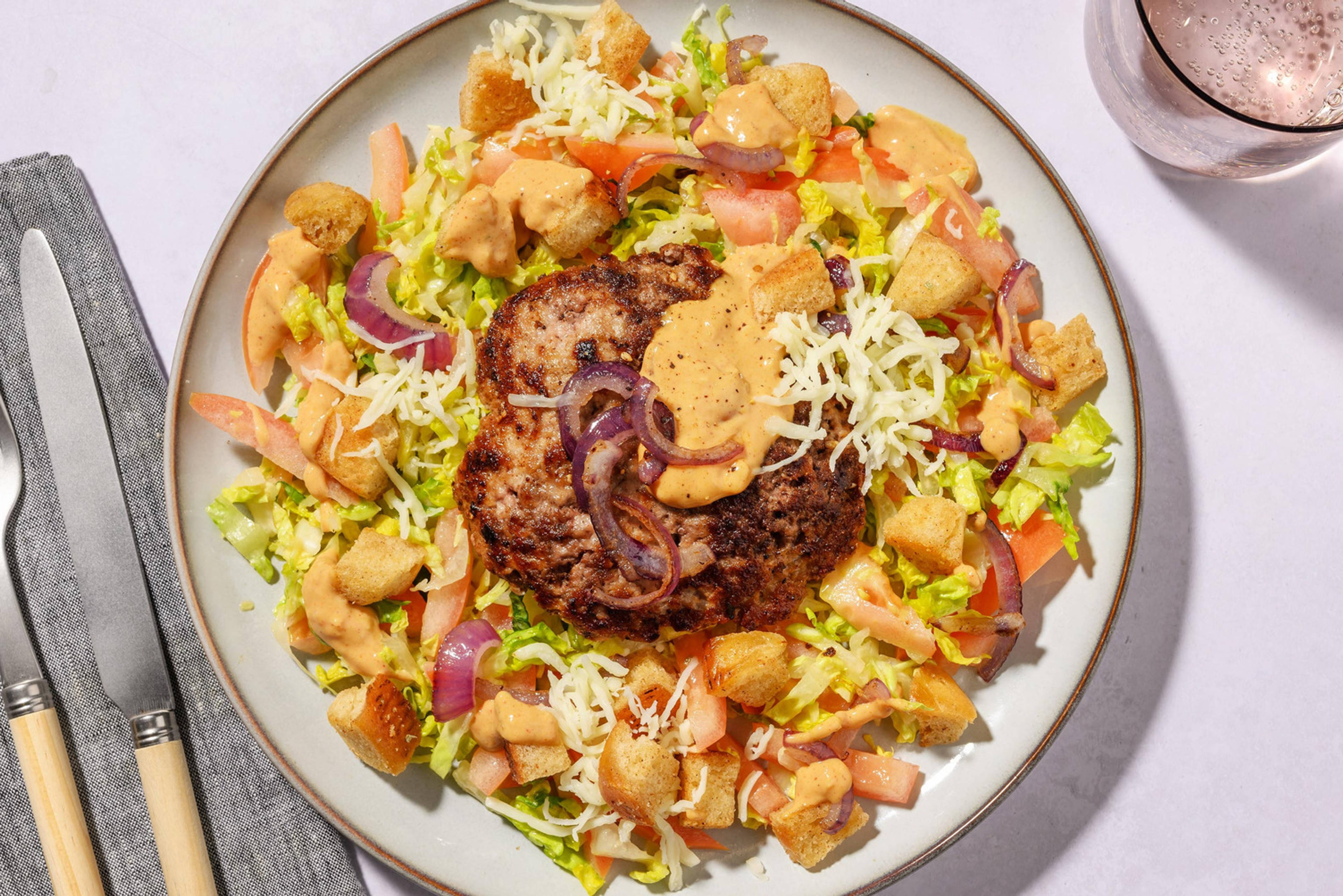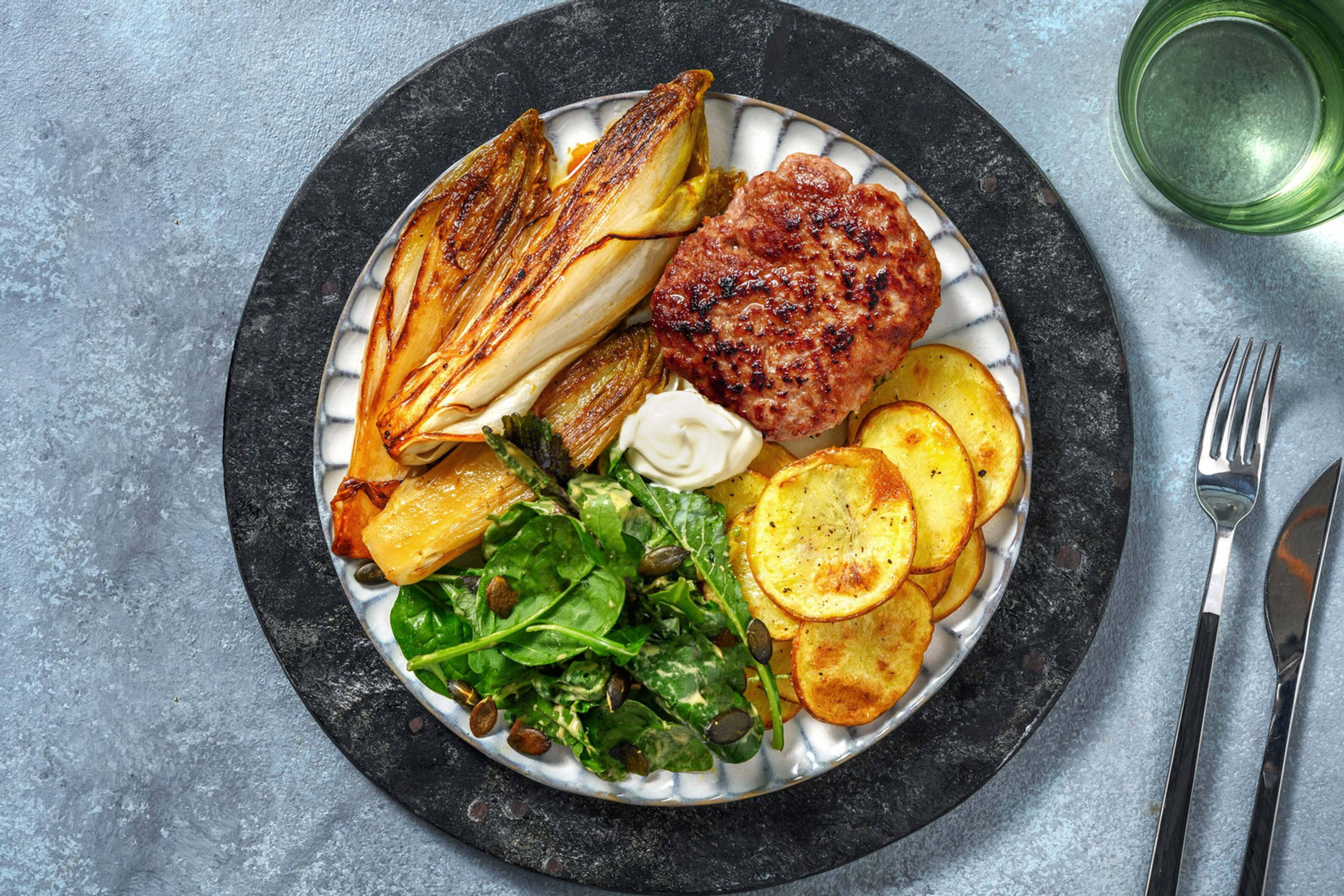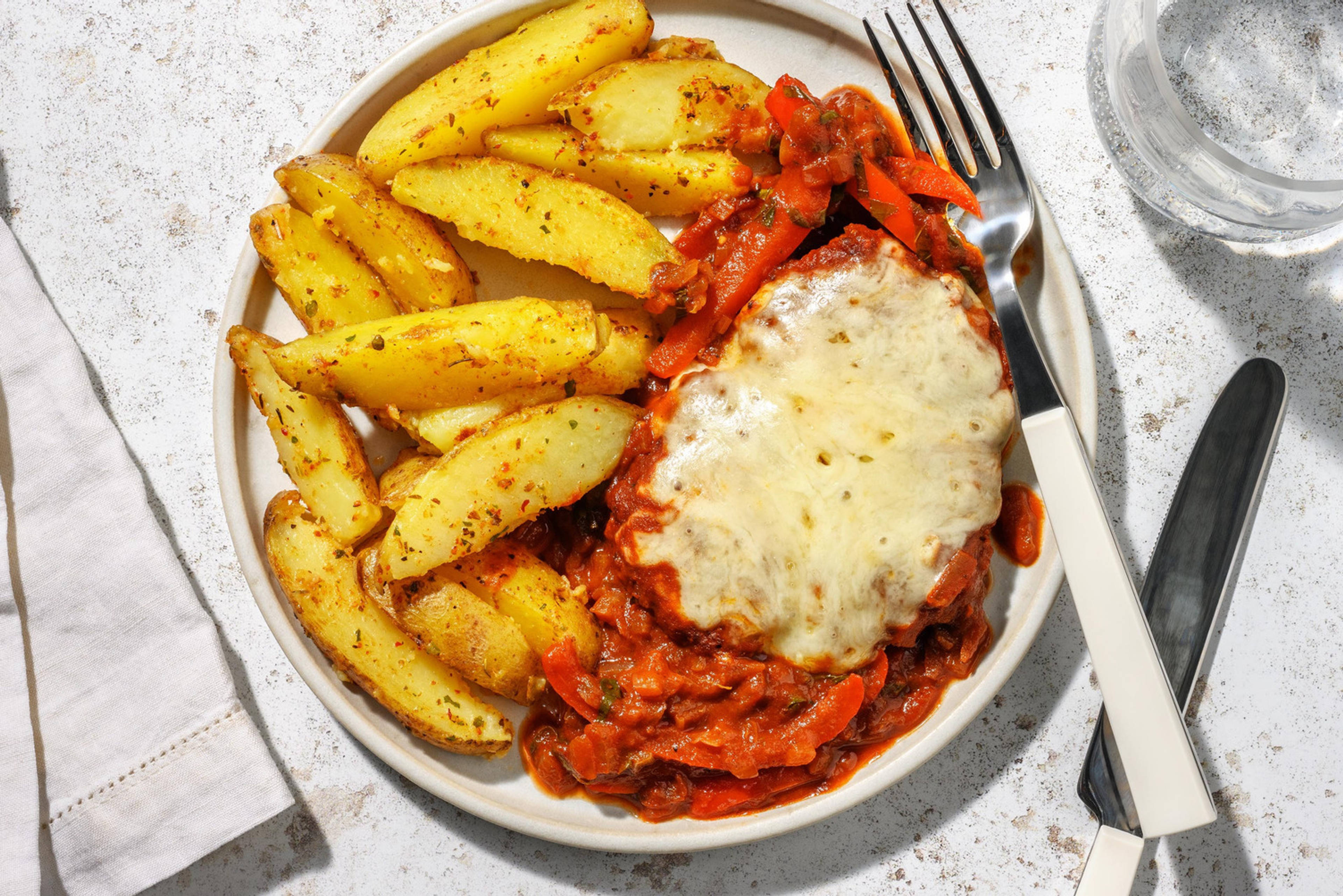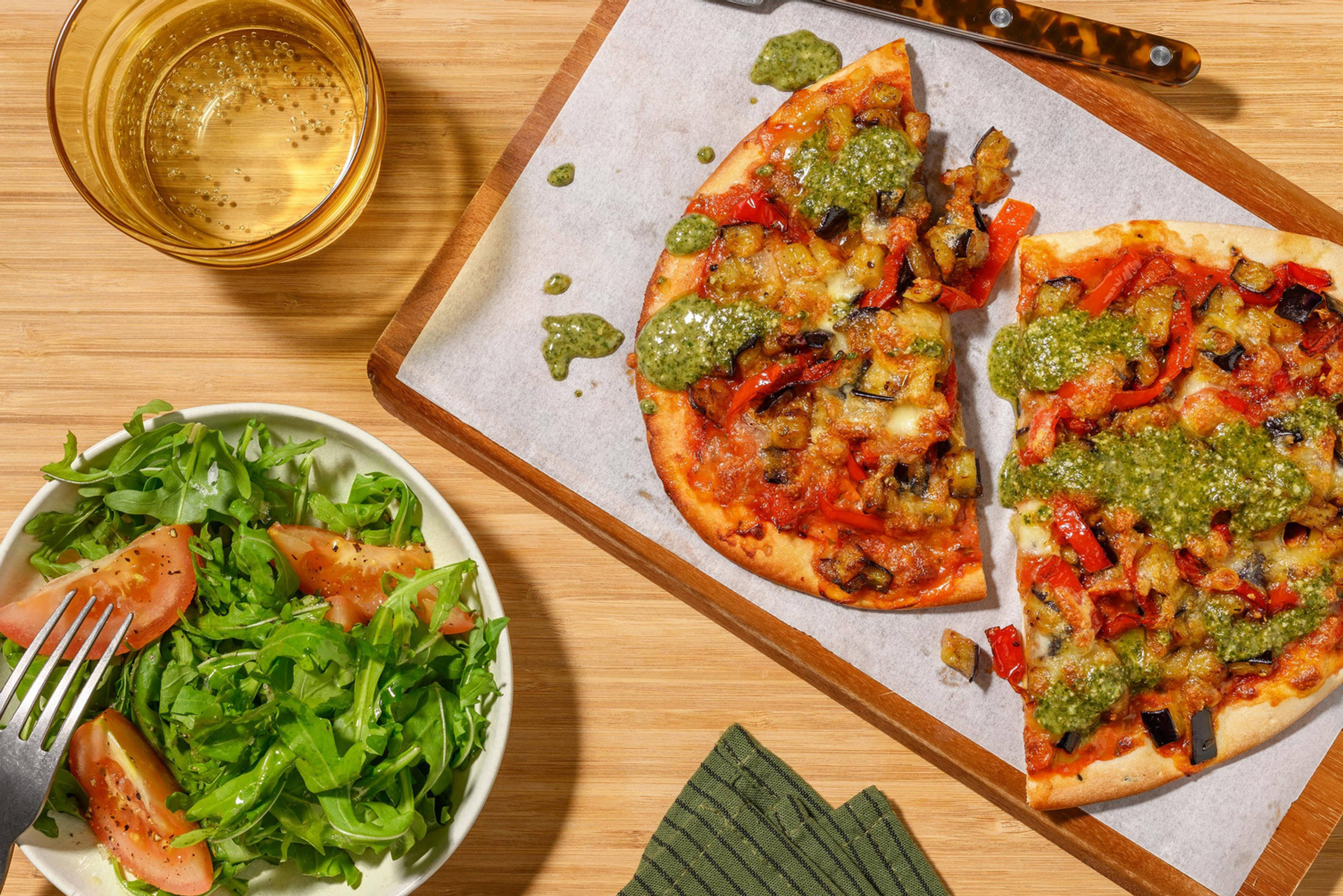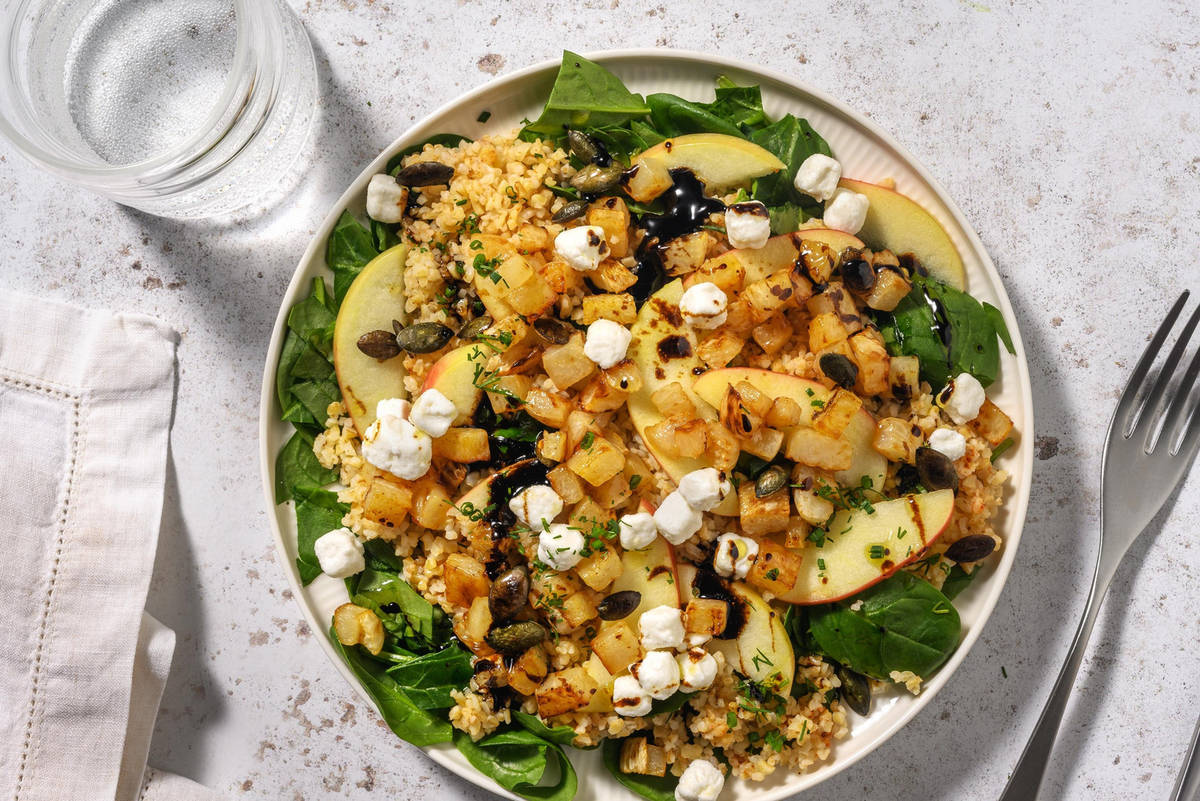
Kohlrabi Salad with Honeyed Goat's Cheese Pearls & Bulgur
with apple, fresh herbs, balsamic dressing & pumpkin seeds
The word "kohlrabi" comes from the German "kohl" (cabbage) and "rabi" (turnip). This versatile vegetable, with its mild, slightly sweet flavour, can be used in all kinds of dishes – even the leaves are edible!
The quantities provided above are averages only.
Produced in a facility that processes eggs, milk, fish, peanuts, sesame, shellfish, soy, tree nuts, and wheat.
Ingredients
75 g
Bulgur
(Contains: Tarwe, Gluten May be present: Kamut, Khorasan (tarwe), Rogge, Gerst, Gluten, Haver)
½ piece
Kohlrabi
½ piece
Apple
50 g
Spinach
25 g
Honeyed goat's cheese pearls
(Contains: Melk (inclusief lactose))
½ sachet(s)
Hello Umami
5 g
Fresh dill & chives
8 milliliters
Crema di balsamico
(Contains: Zwaveldioxide en sulfiet)
10 g
Pumpkin seeds
(May be present: Pinda's, Noten, Sesamzaad)
Not included in your delivery
½ tablespoon
[Plant-based] butter
30 milliliters
Water
1 tablespoon
Extra virgin olive oil
1 teaspoon
White wine vinegar
¼ teaspoon
Mustard
to taste
Salt and pepper
Nutrition Values
Utensils
Cooking Steps
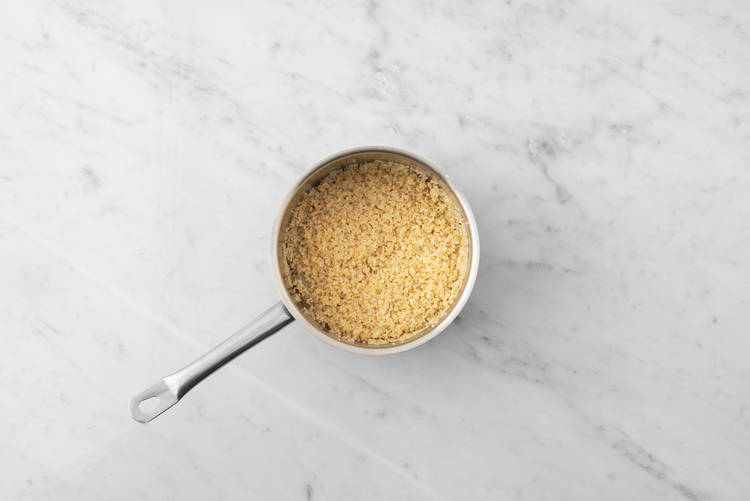
- Boil plenty of water in a pot or saucepan. Add the bulgur and cook for 10 minutes until done, then drain and set aside.
- In the meantime, peel and dice the kohlrabi.
- Roughly chop the spinach if preferred (see Tip).
Tip: the spinach is served raw, but you can also boil it with the bulgur during the final 2 minutes of cooking.
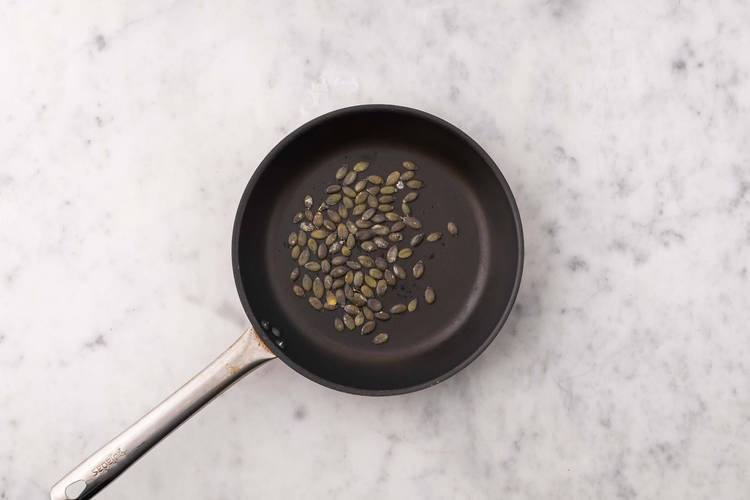
- Heat a clean deep frying pan over medium-high heat and toast the pumpkin seeds untill they start to pop. Remove from the pan and set aside.
- Melt a knob of butter in the same pan over high heat. Fry the kohlrabi for 2 - 3 minutes until golden-brown.
- Pour in the water (see pantry for amount).
- Cook over medium heat for 5 - 8 minutes or until done, covered. Season with salt and pepper.
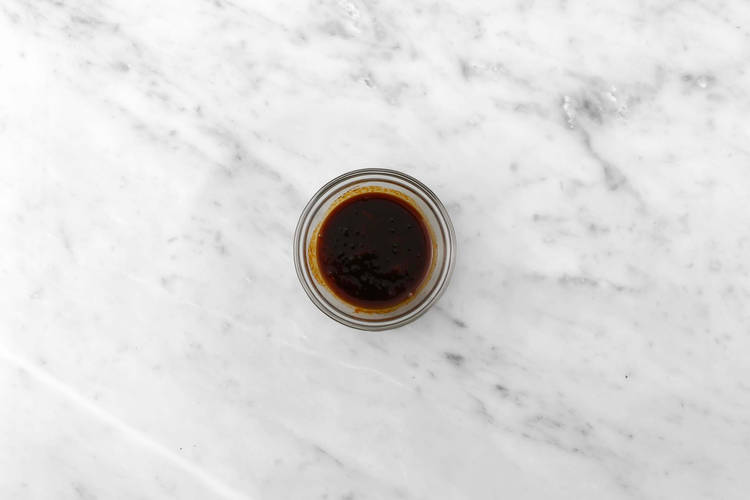
- Peel and core the apple, then slice it.
- Finely chop the fresh herbs.
- In a small bowl, combine the crema di balsamico with the extra virgin olive oil, the white wine vinegar and the mustard. Season to taste with salt and pepper.
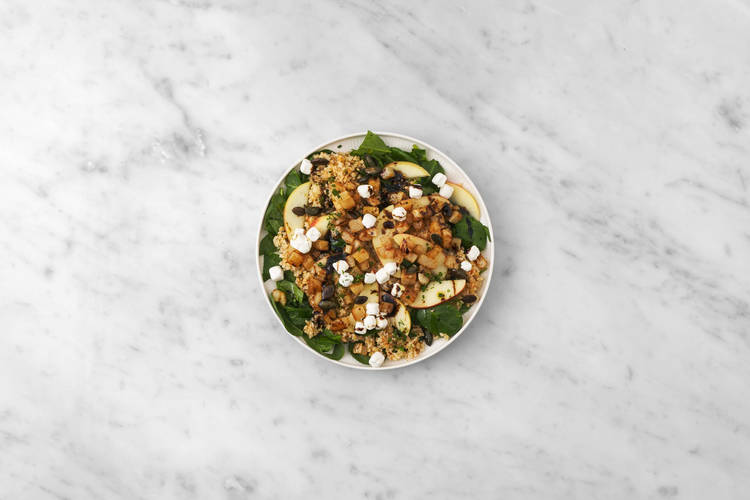
- Stir the Hello Umami into the bulgur and drizzle with extra virgin olive oil as preferred. Season to taste with salt and pepper.
- Serve the spinach on plates, topped with the bulgur, kohlrabi, apple and goat's cheese pearls.
- Drizzle with the balsamic dressing. Garnish with the pumpkin seeds and the fresh herbs.
